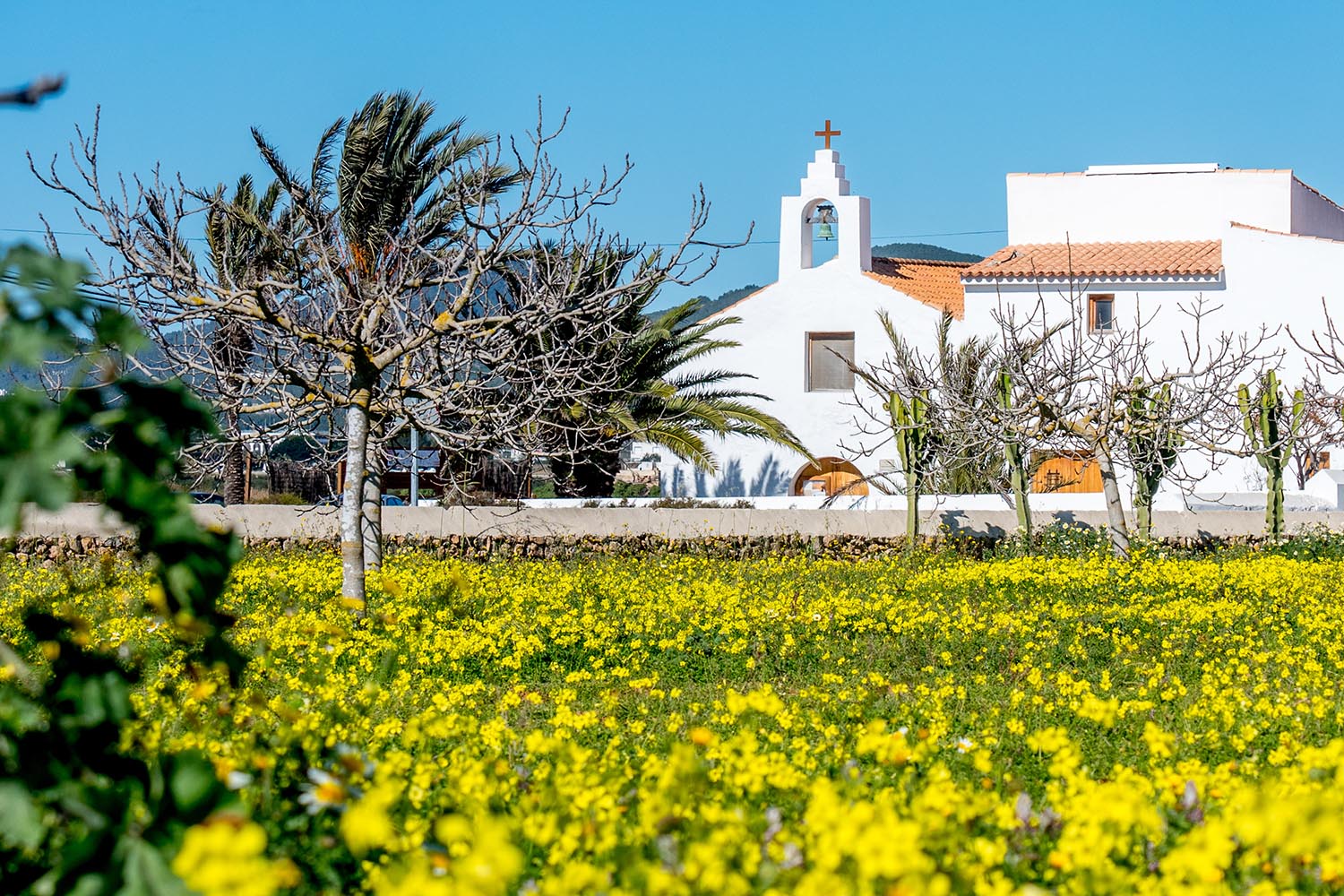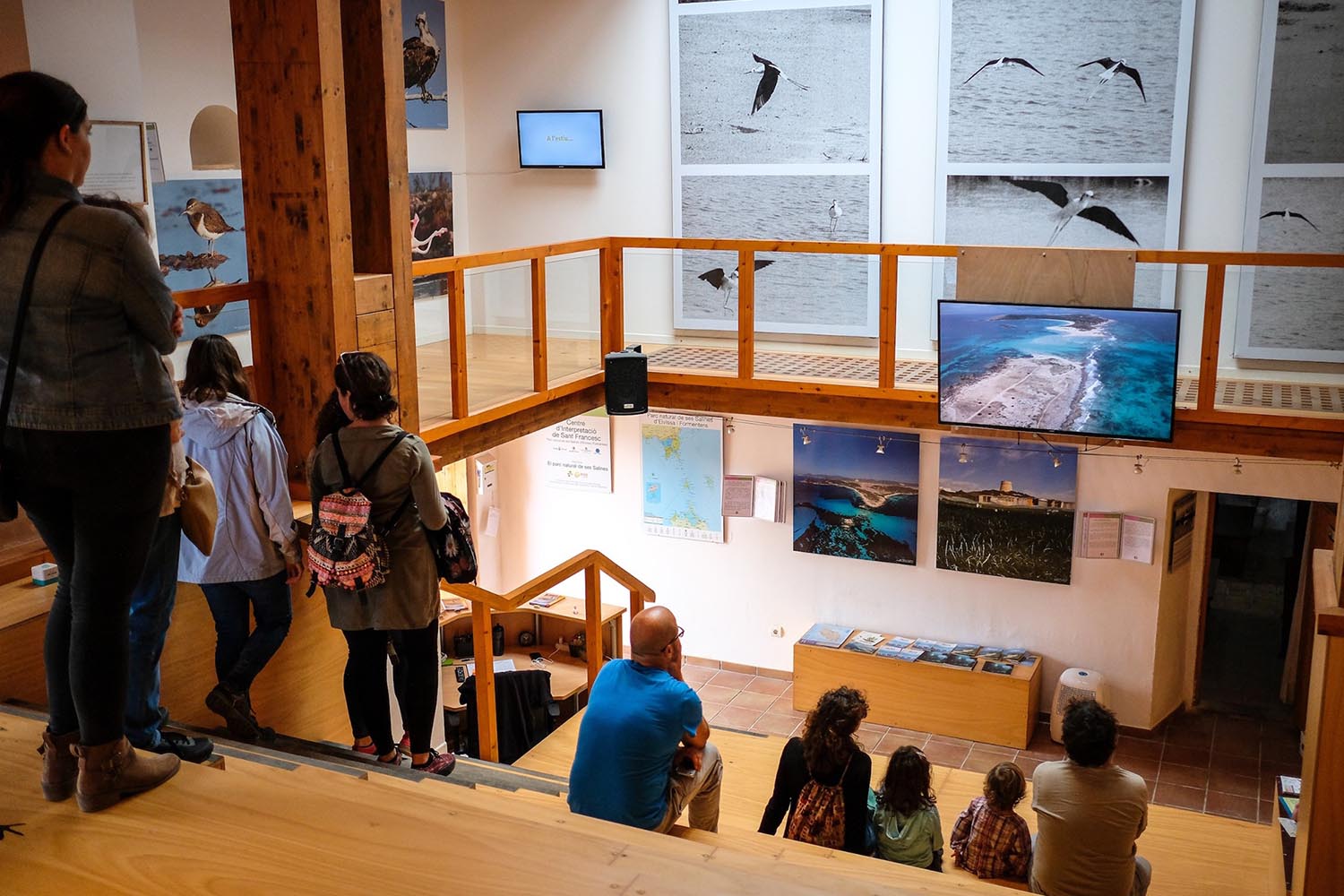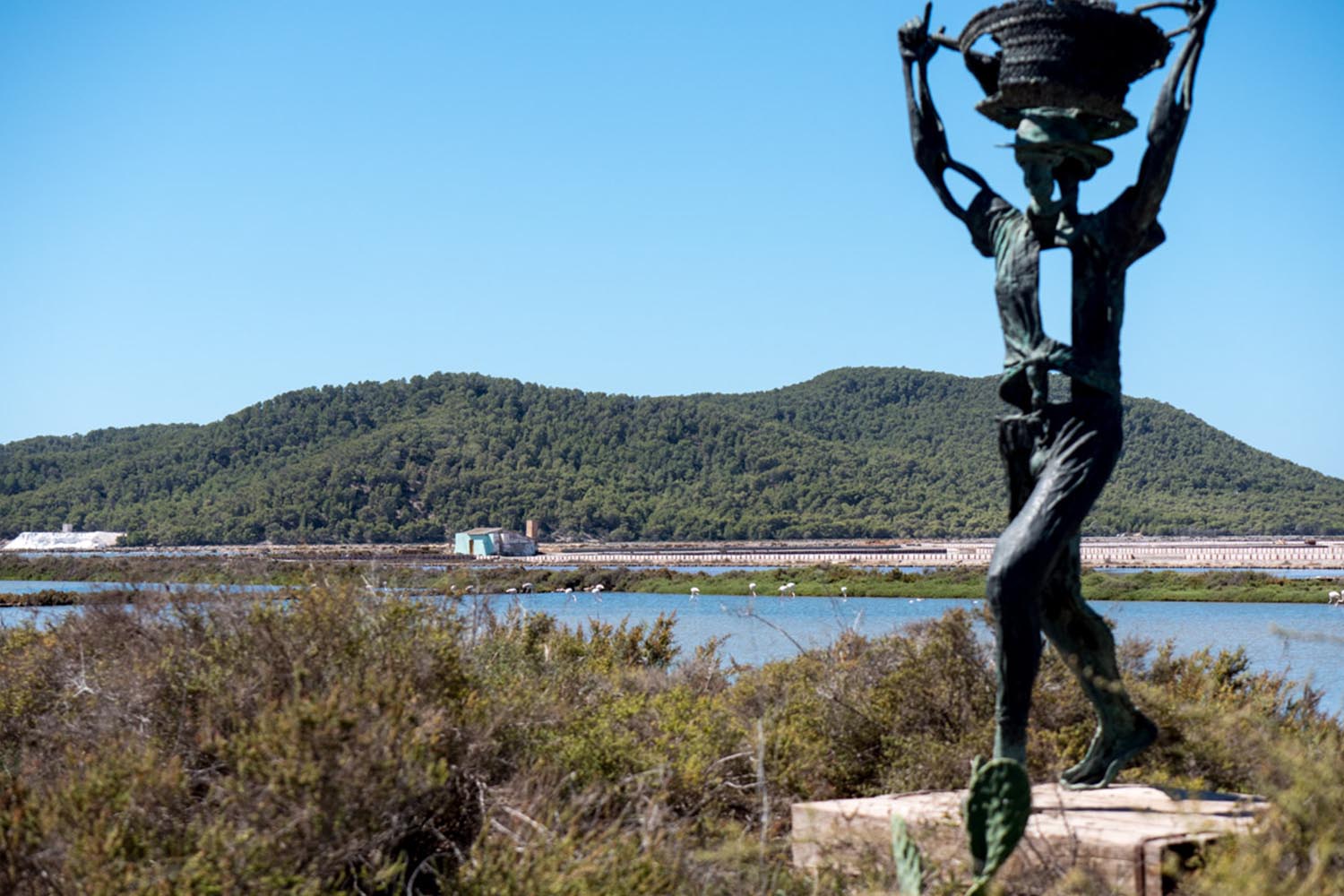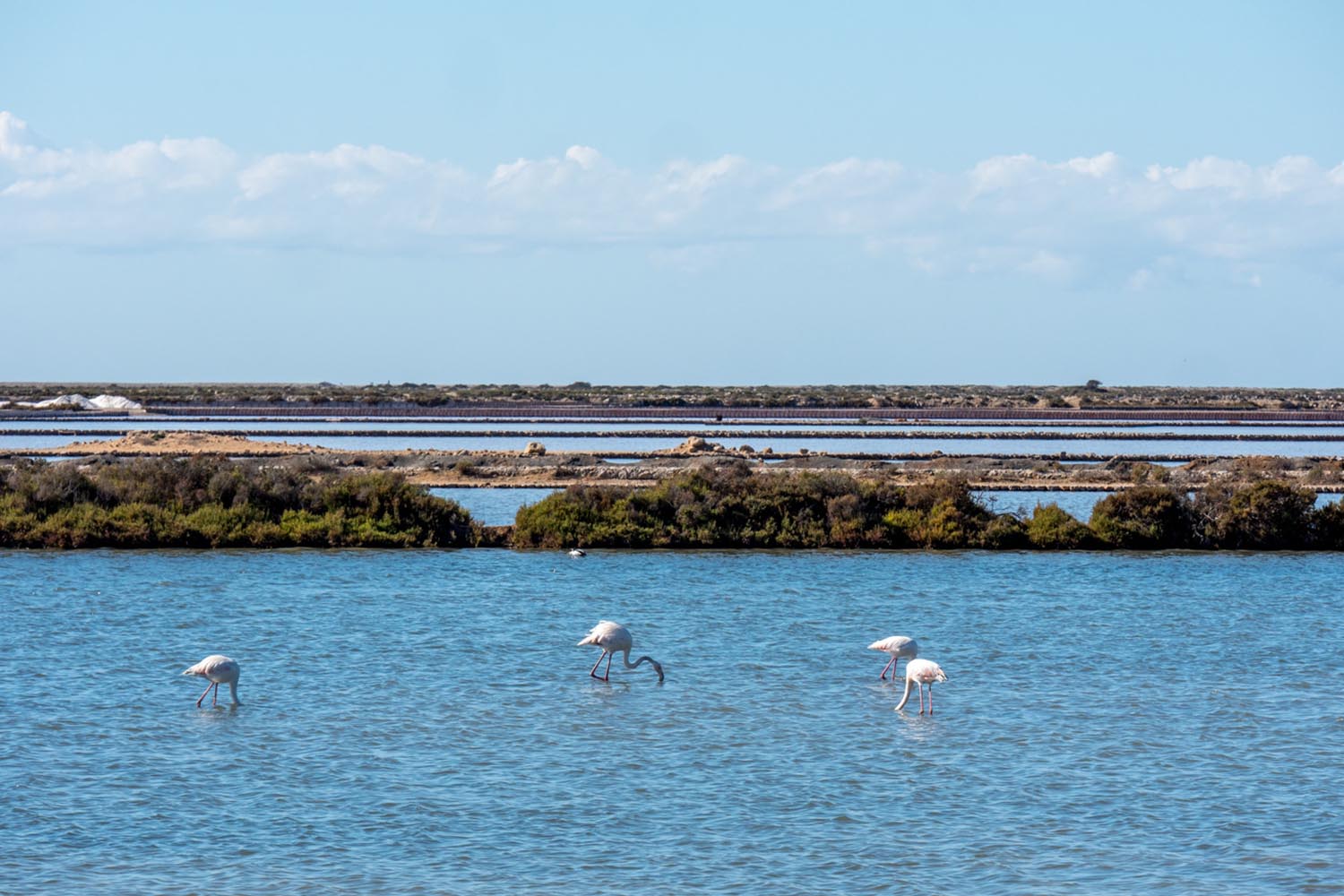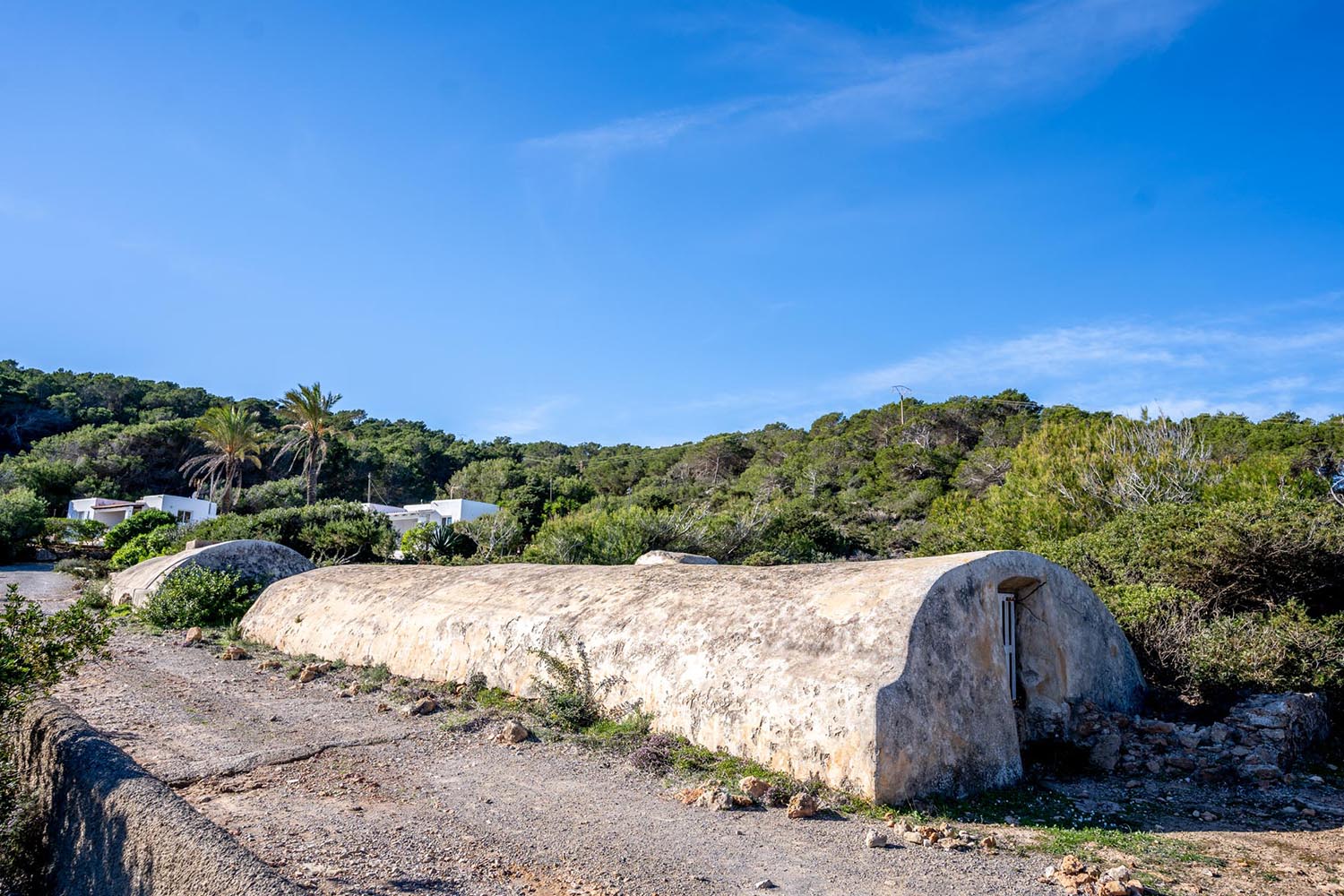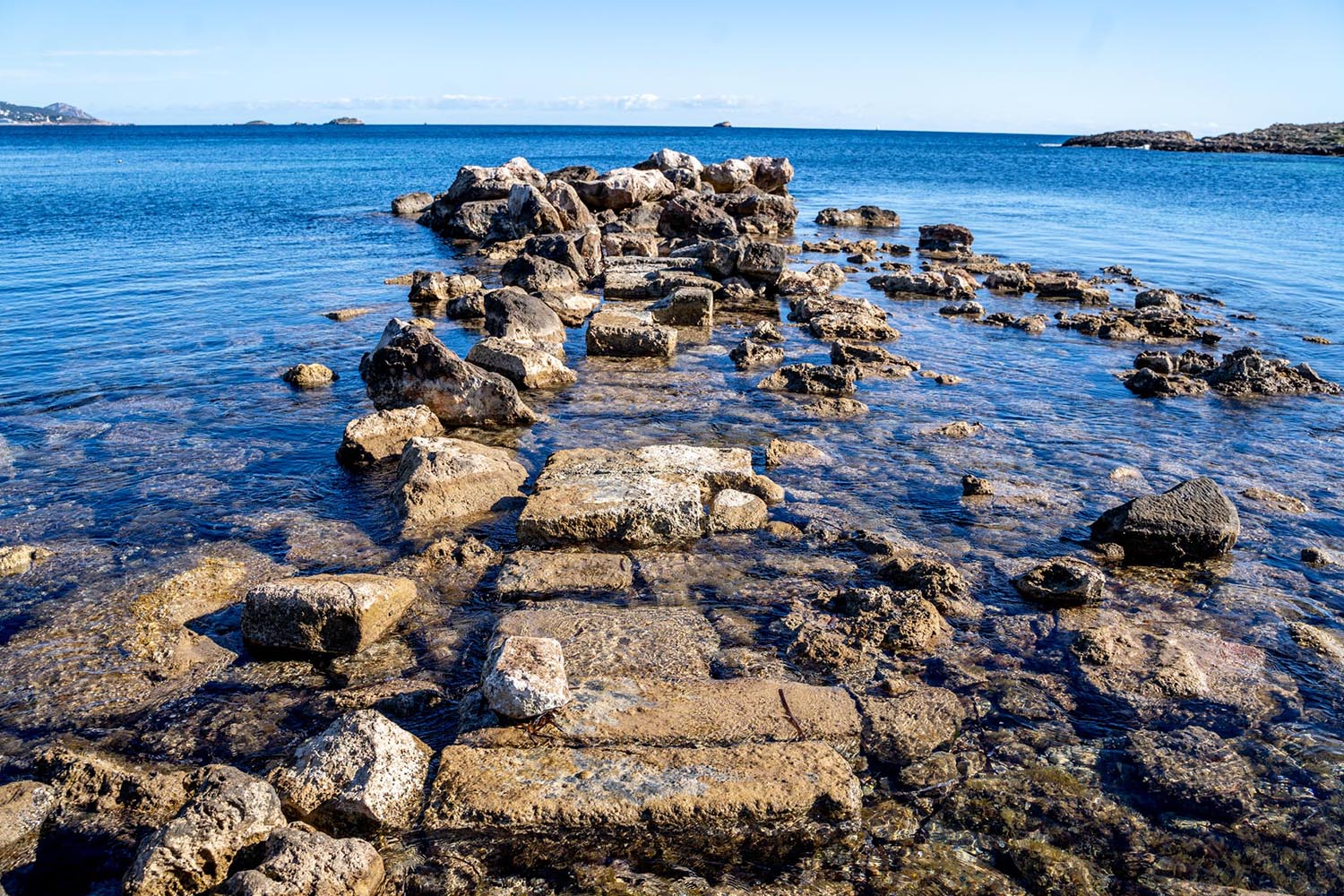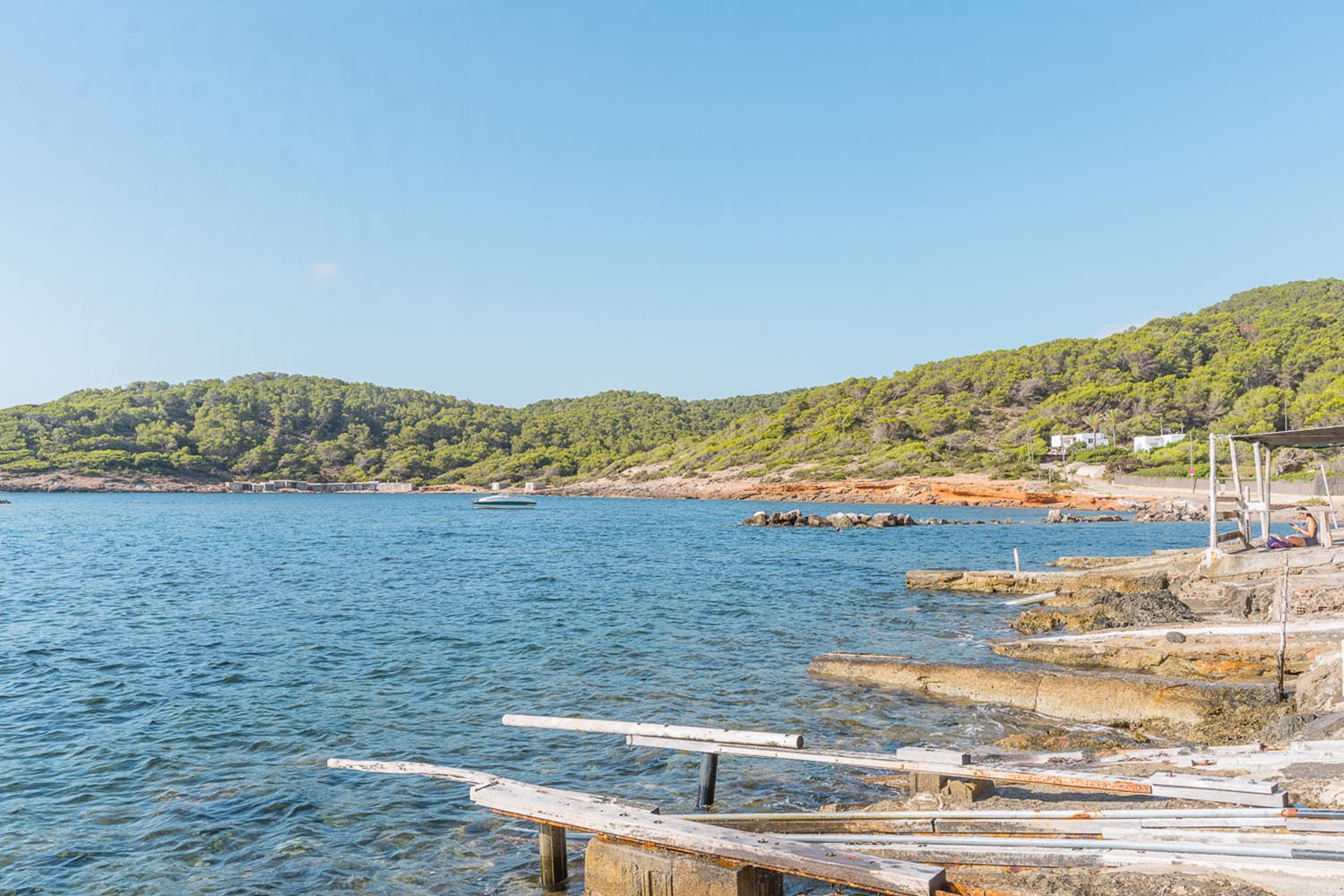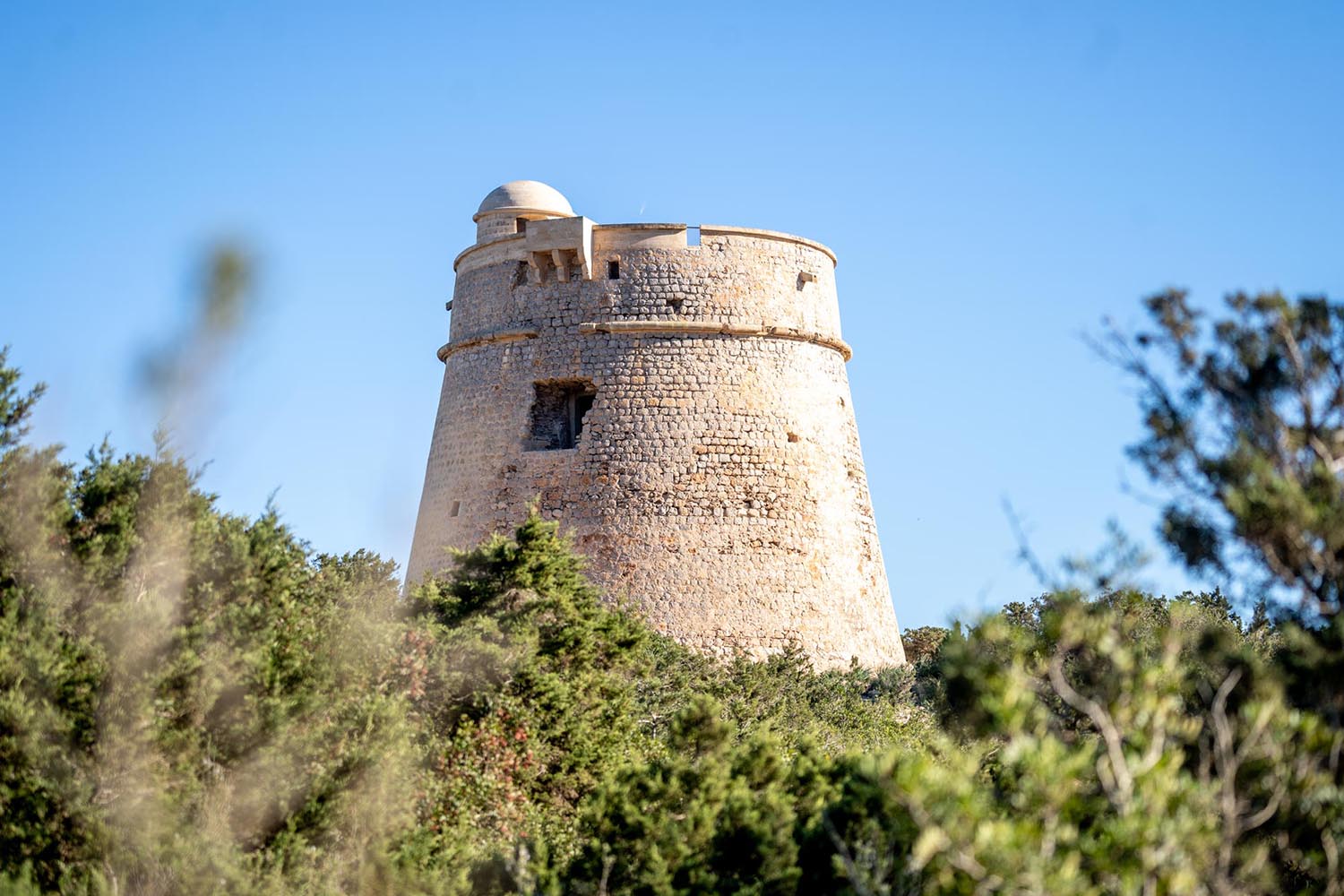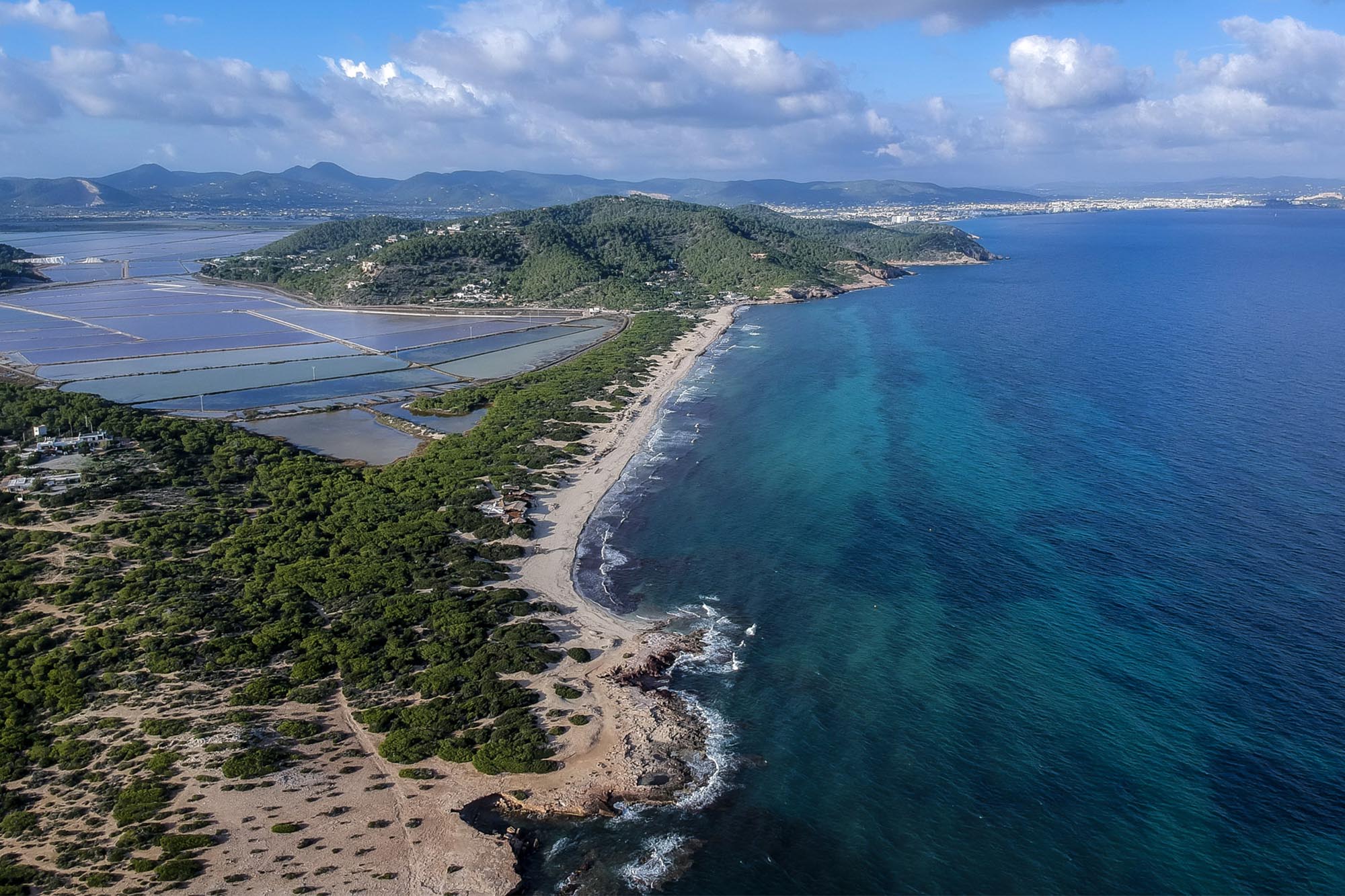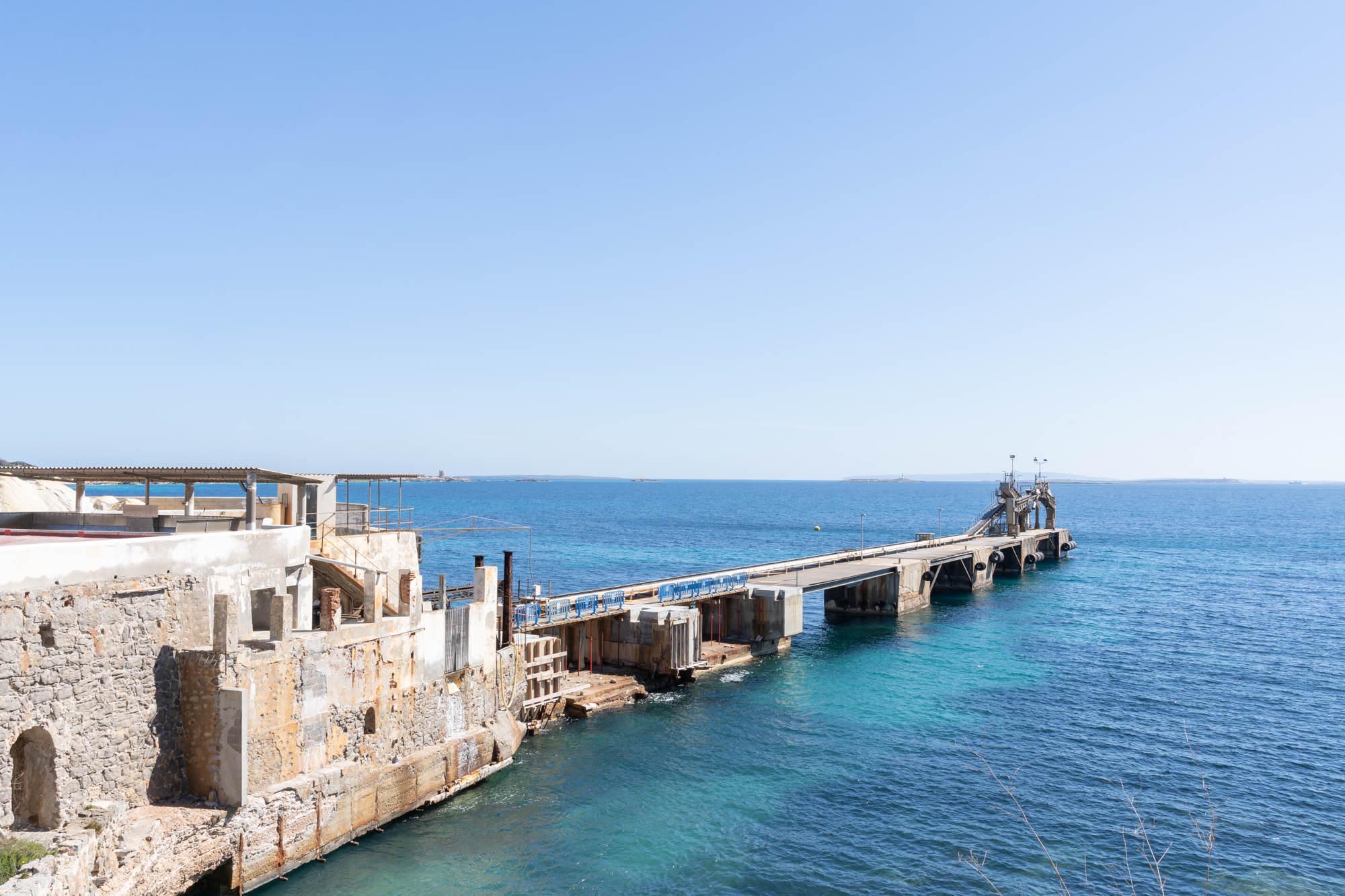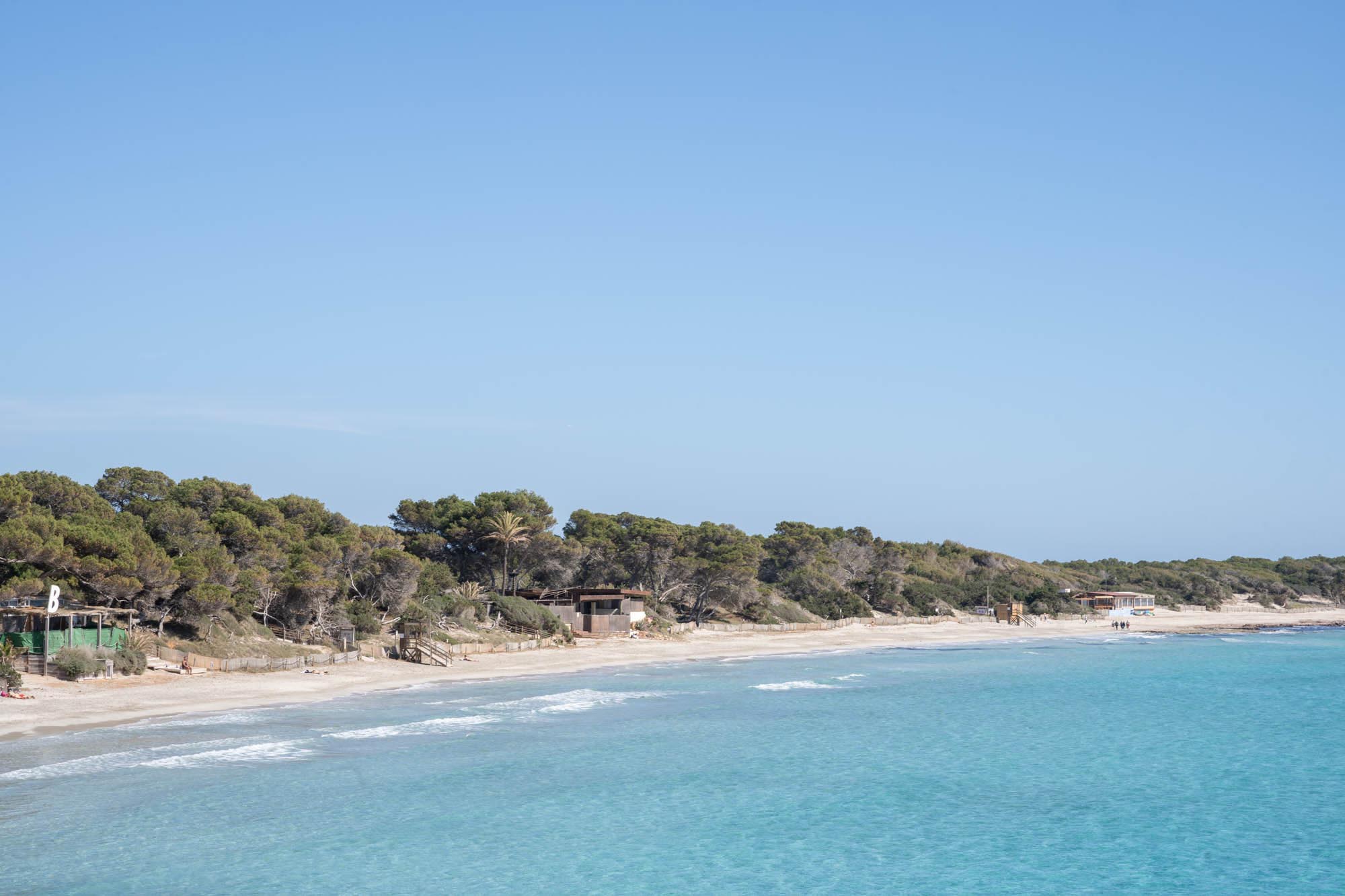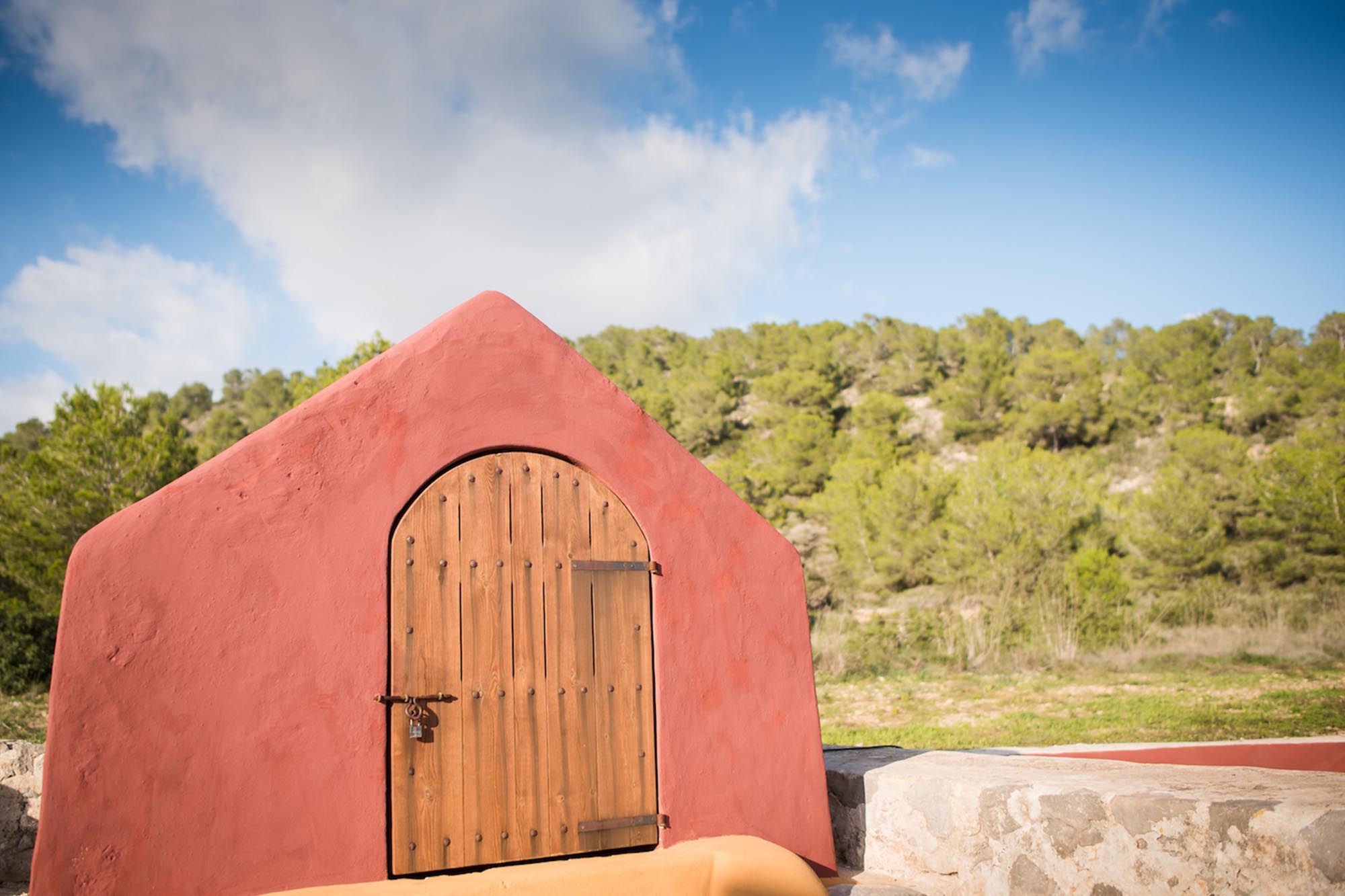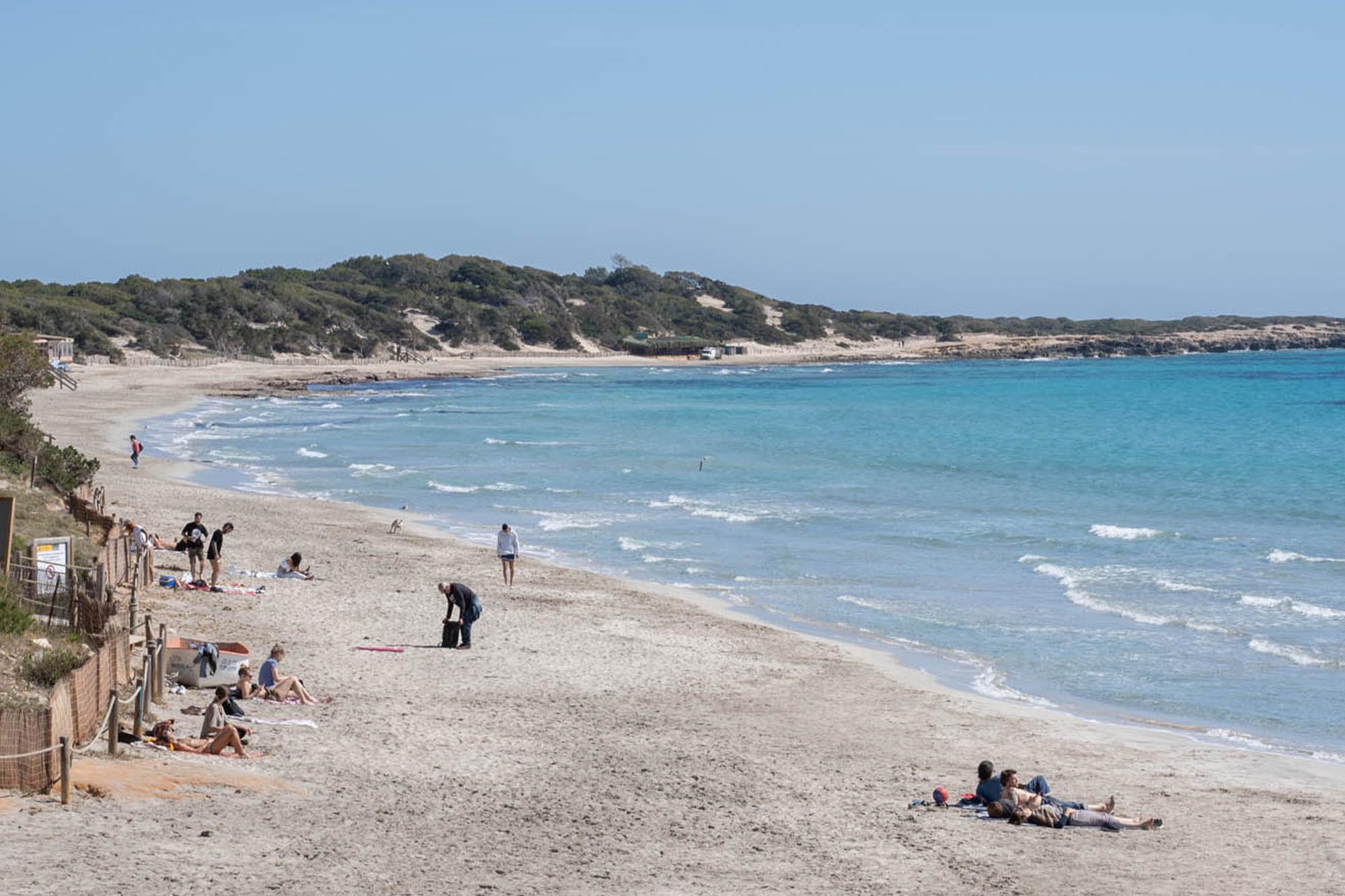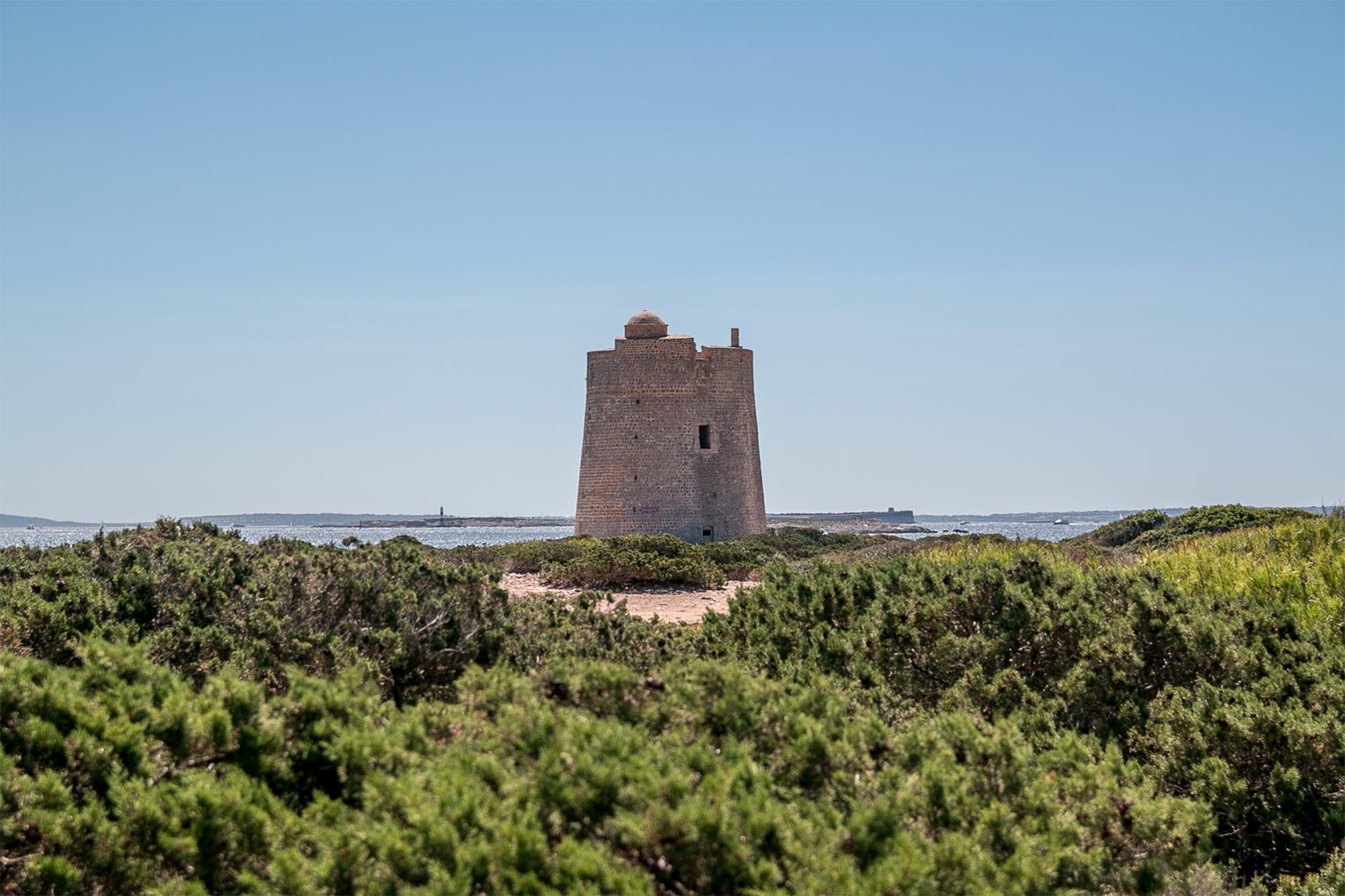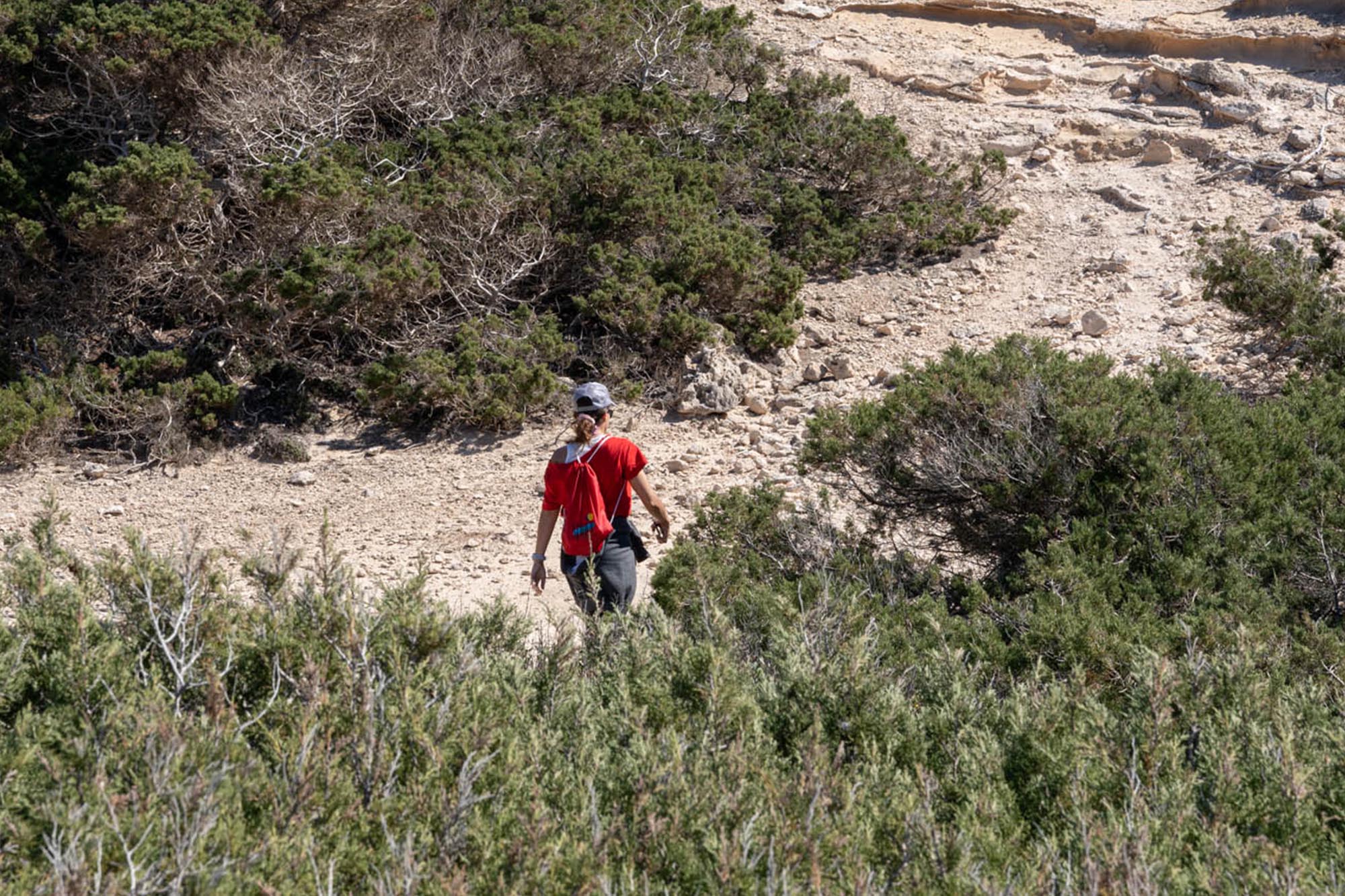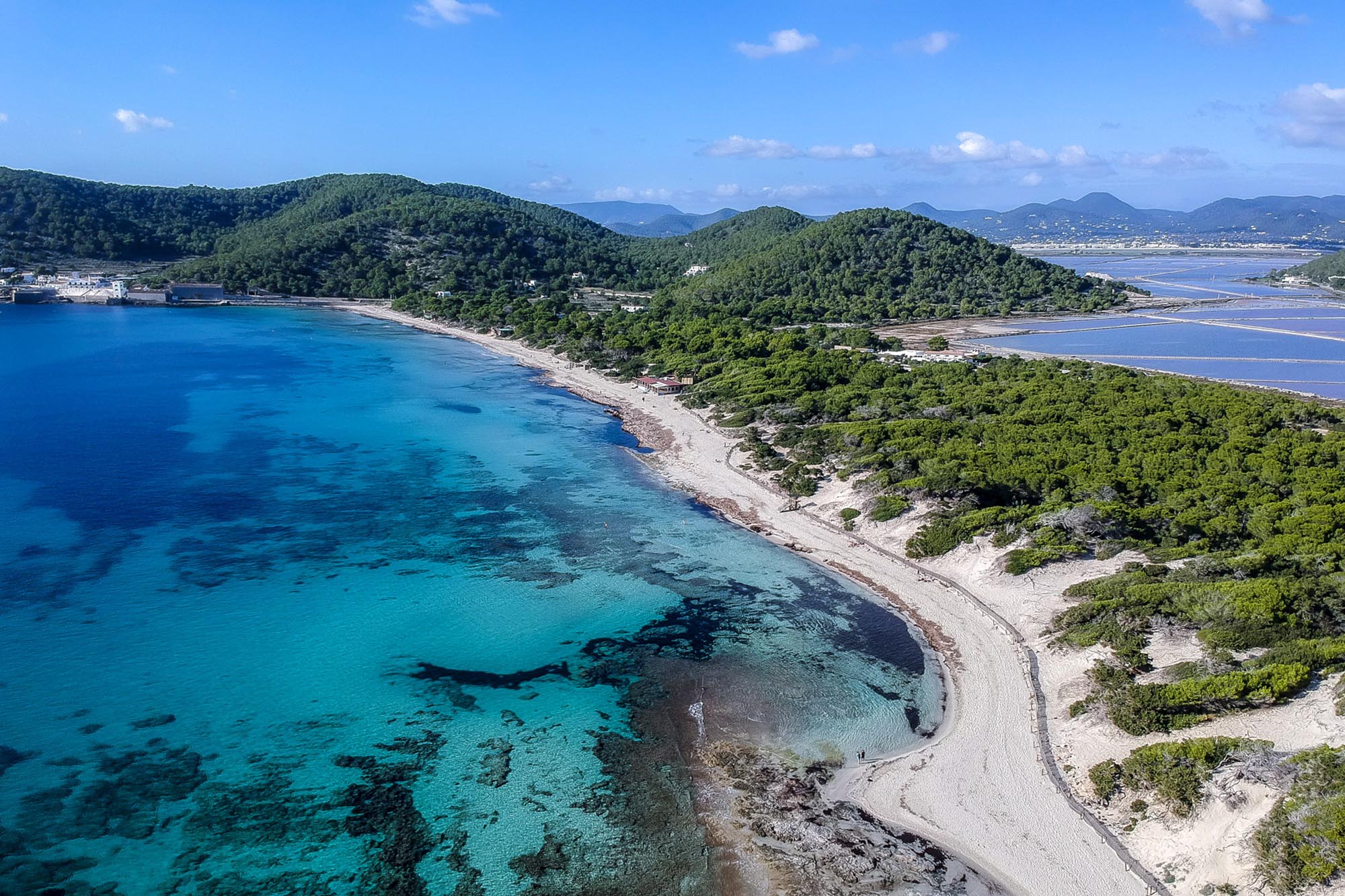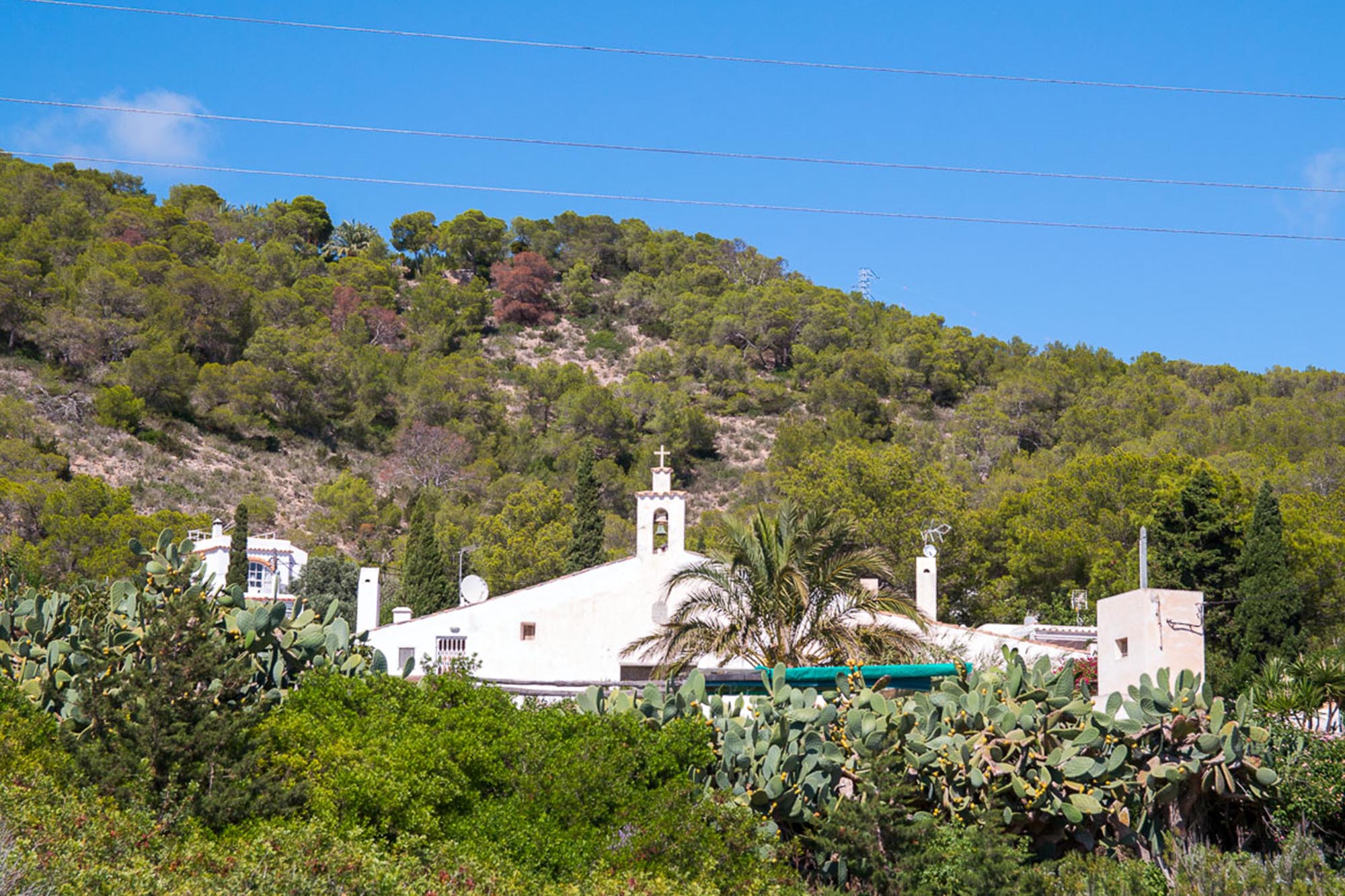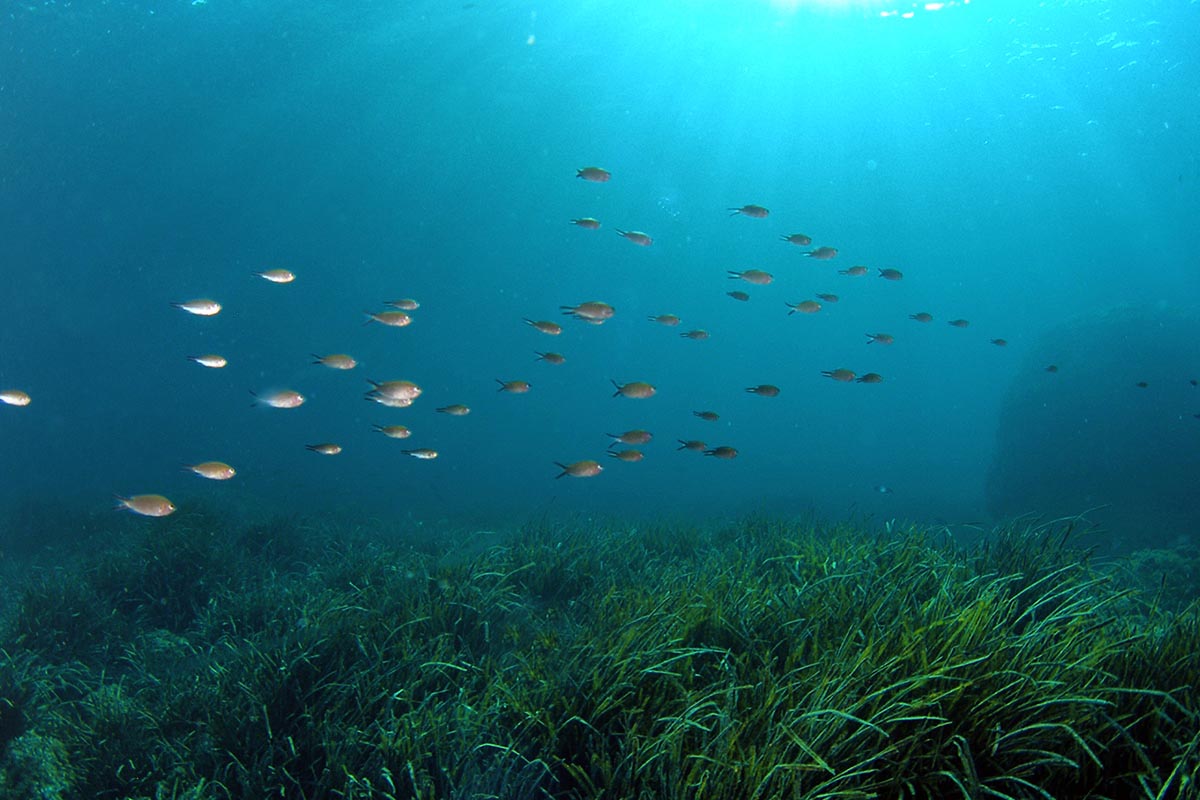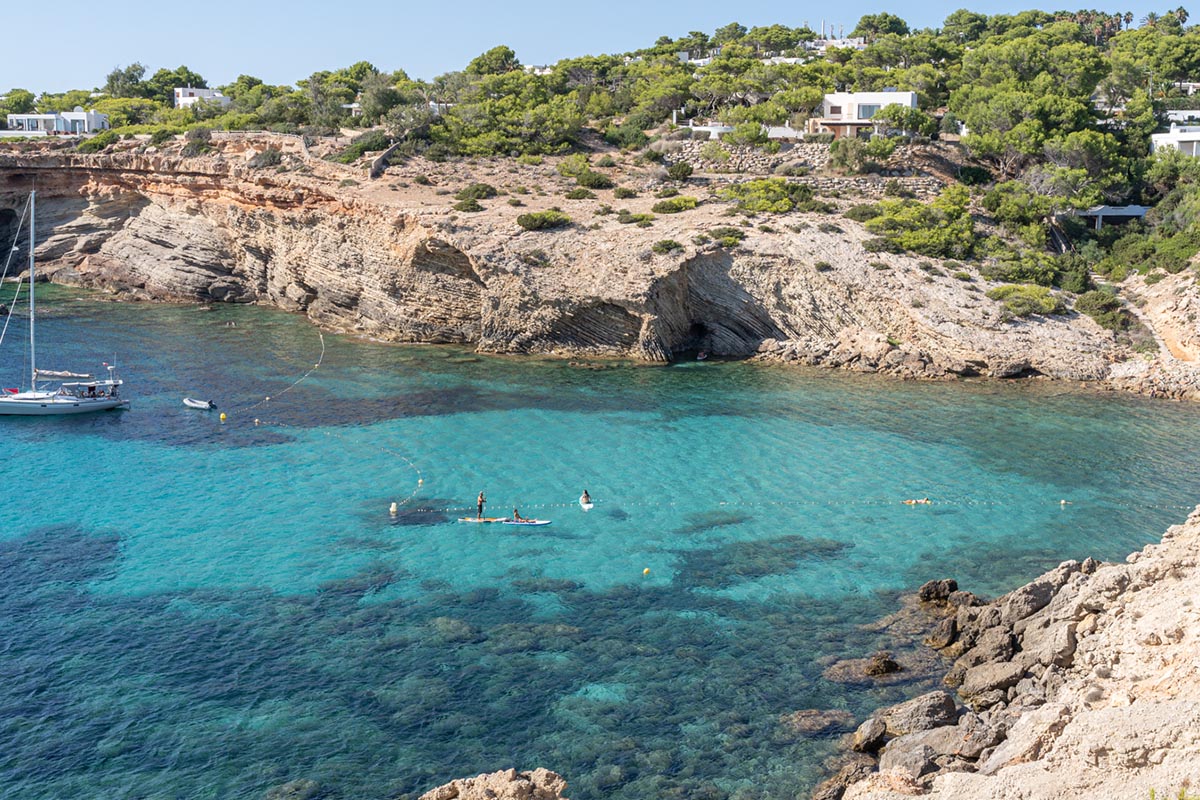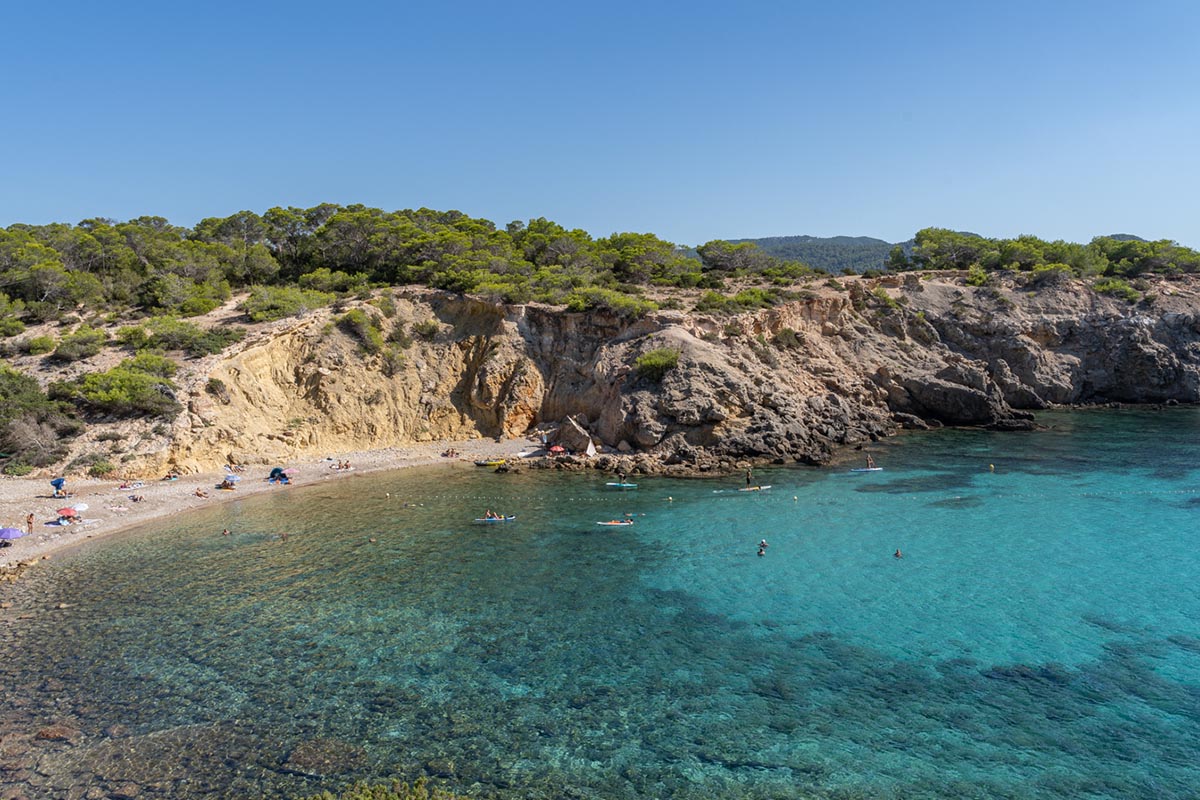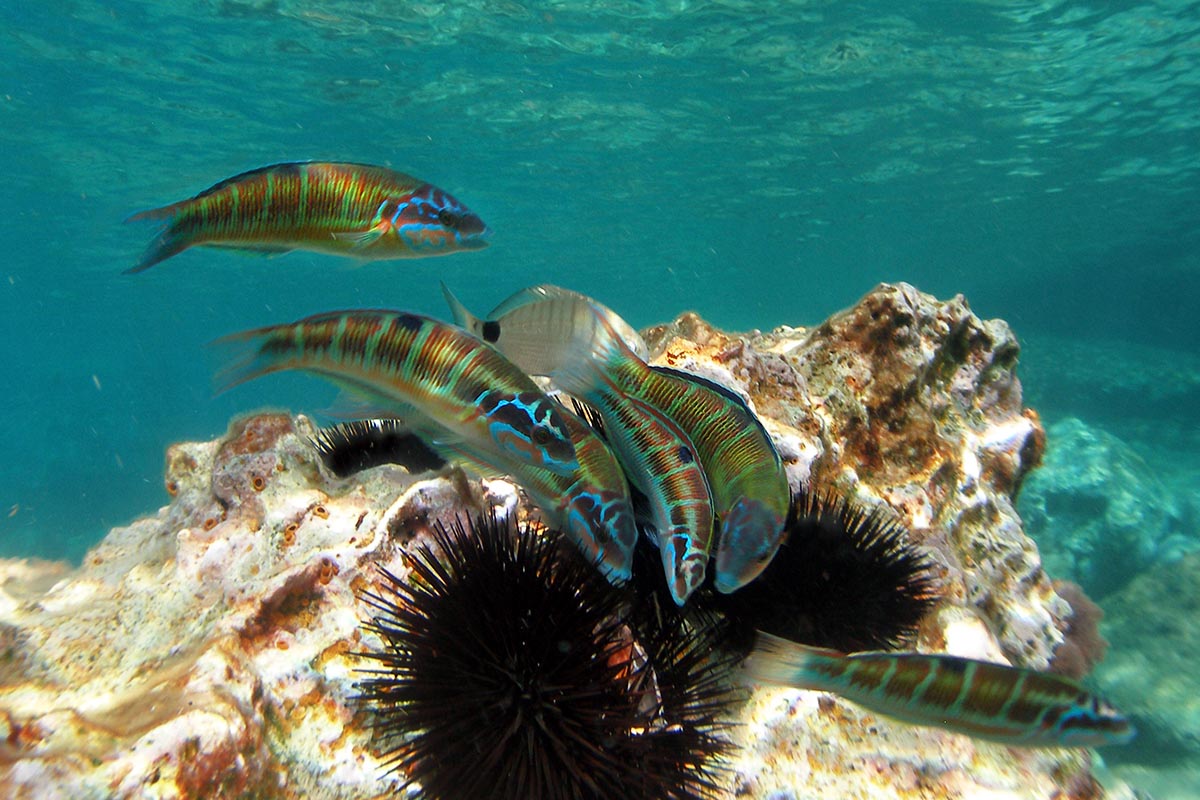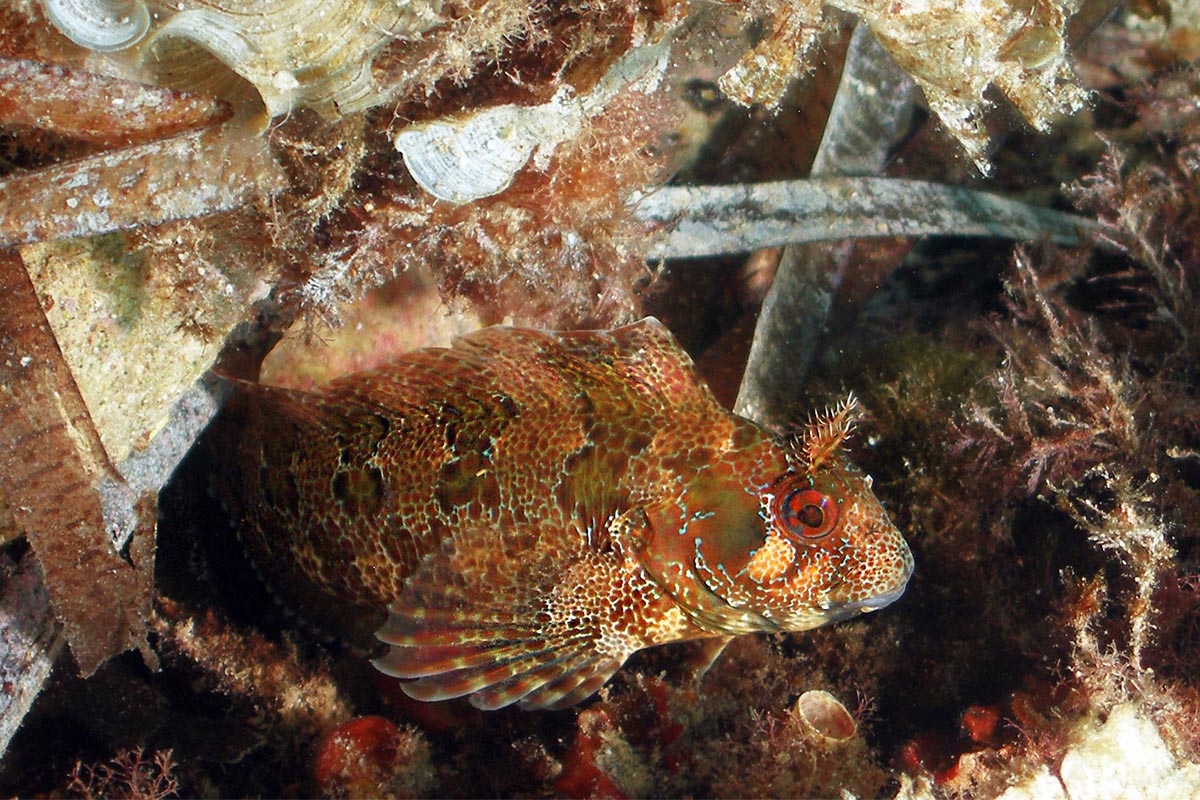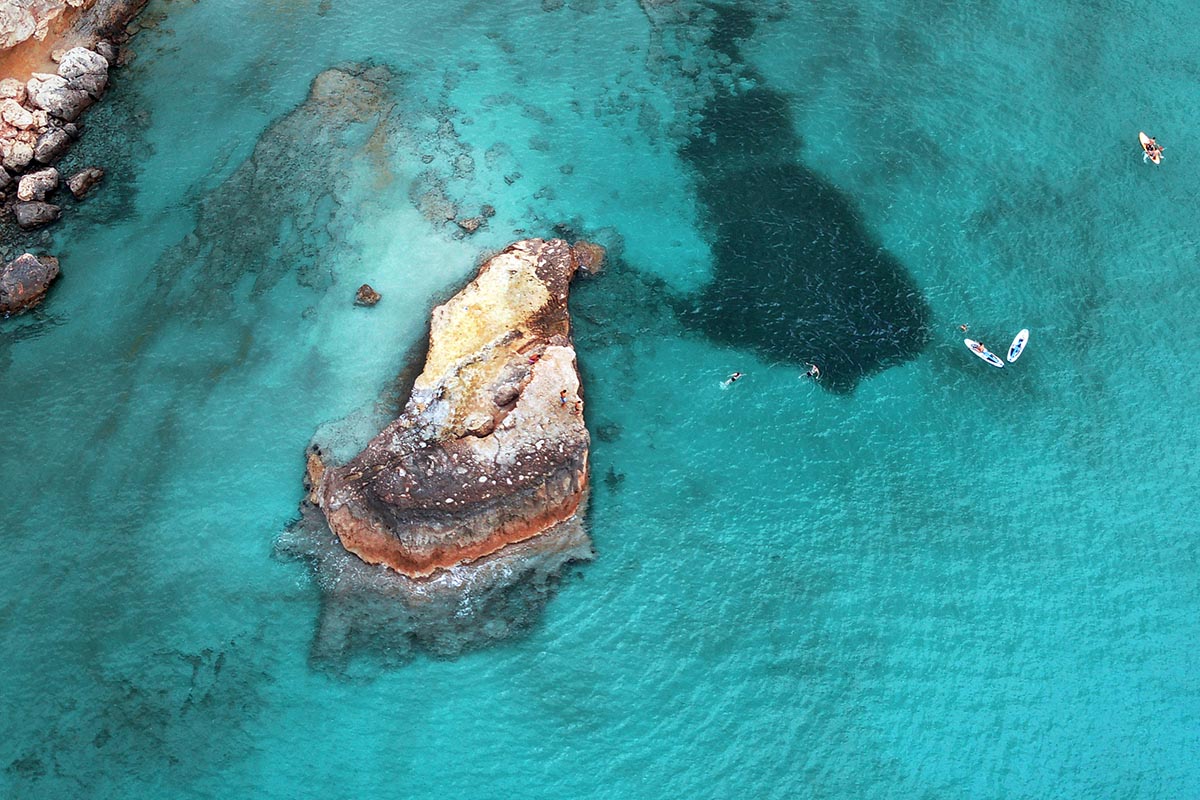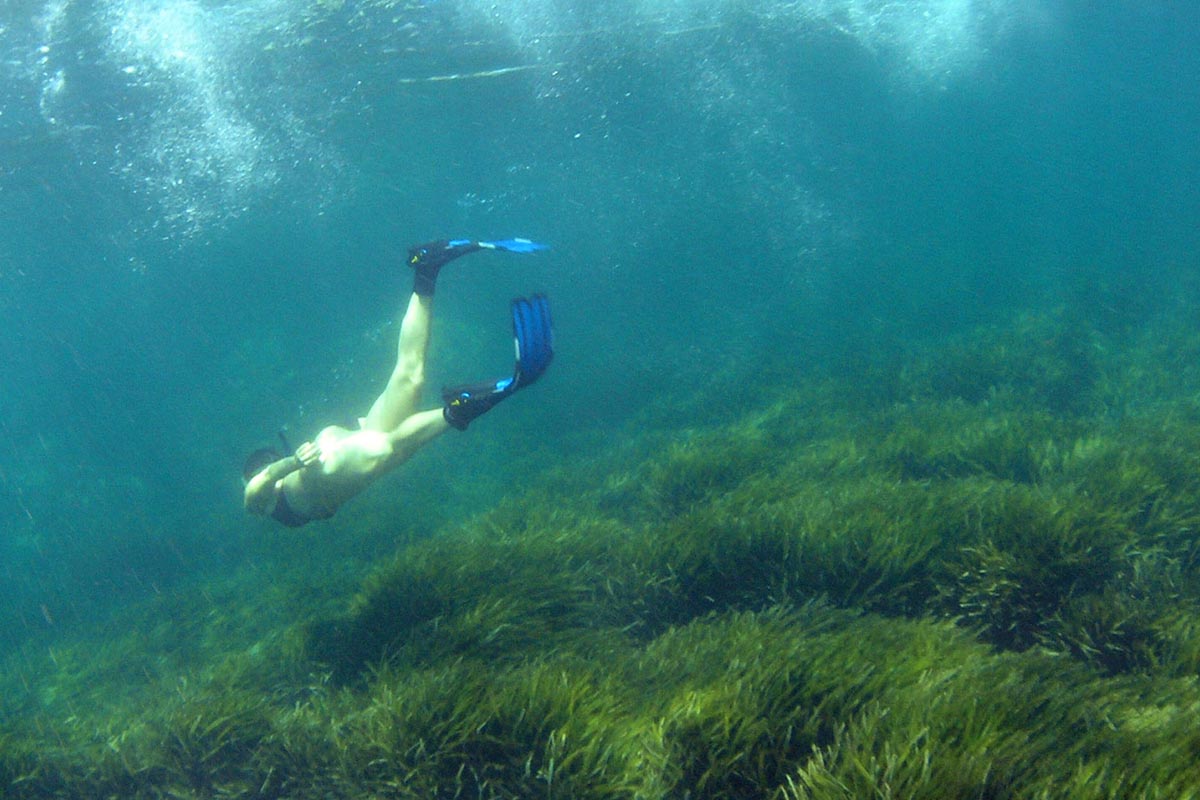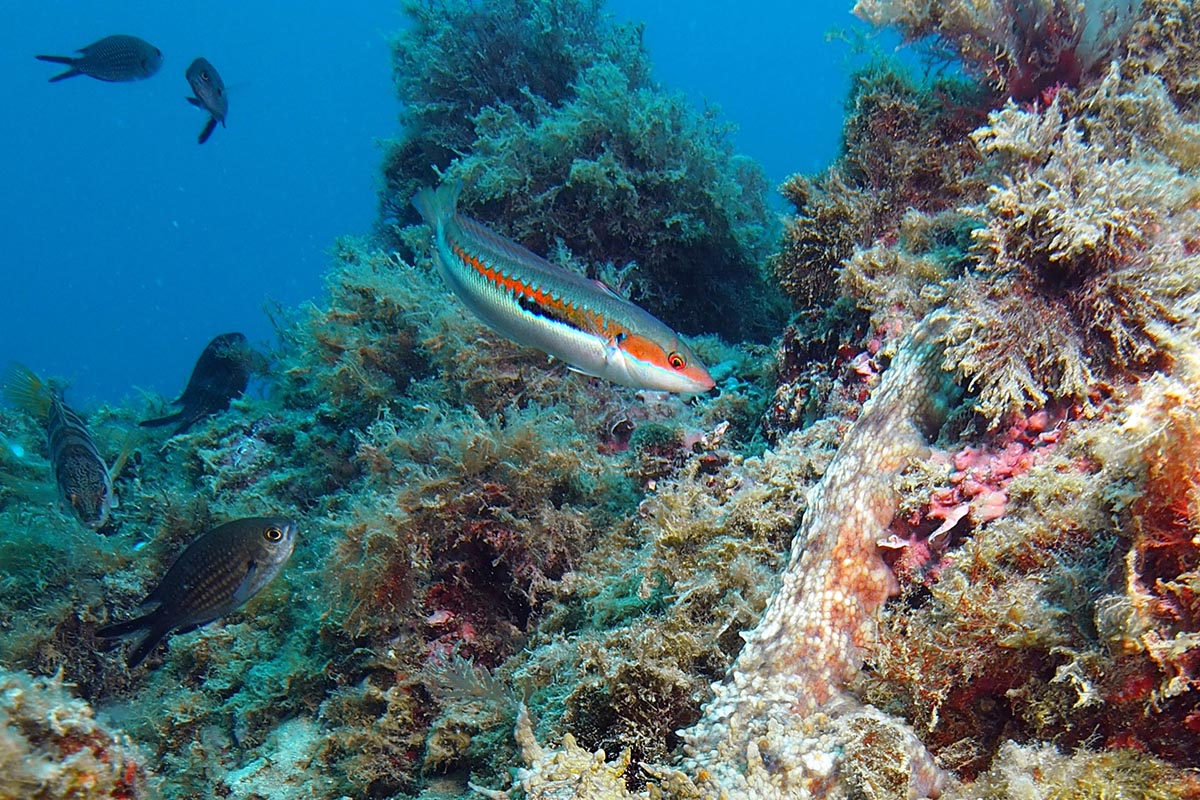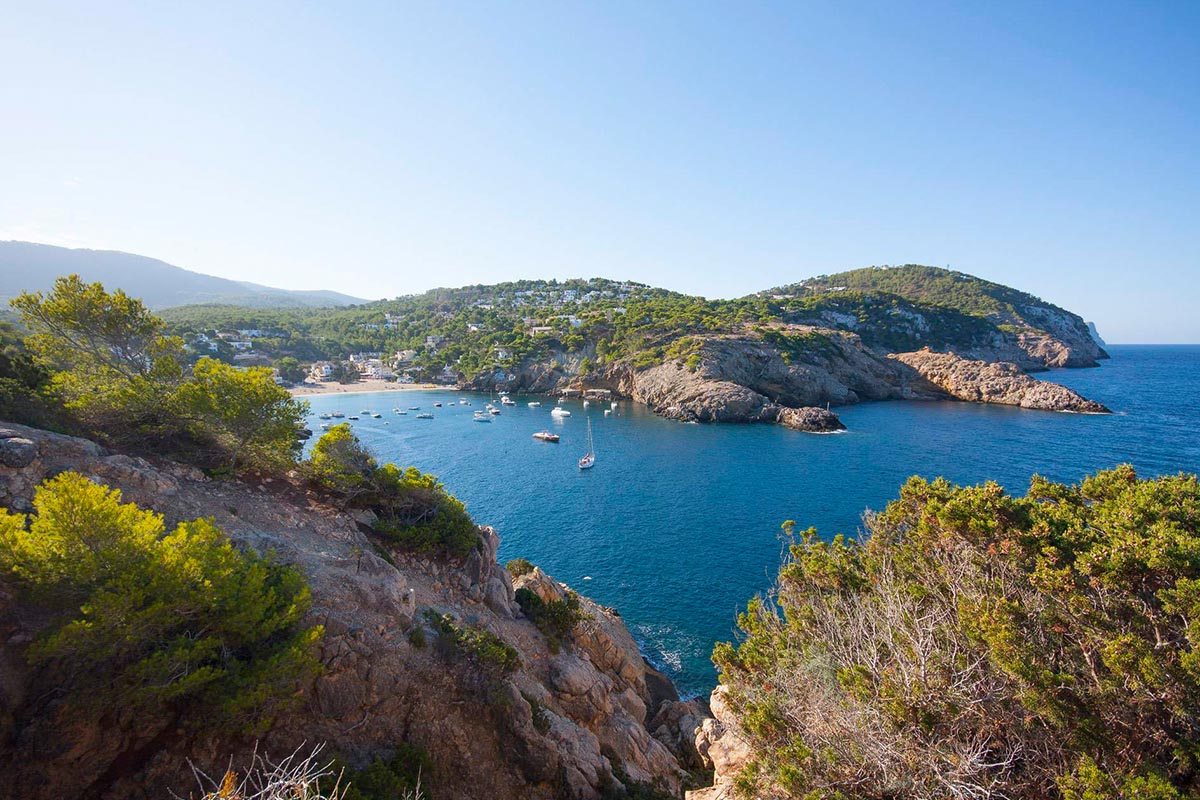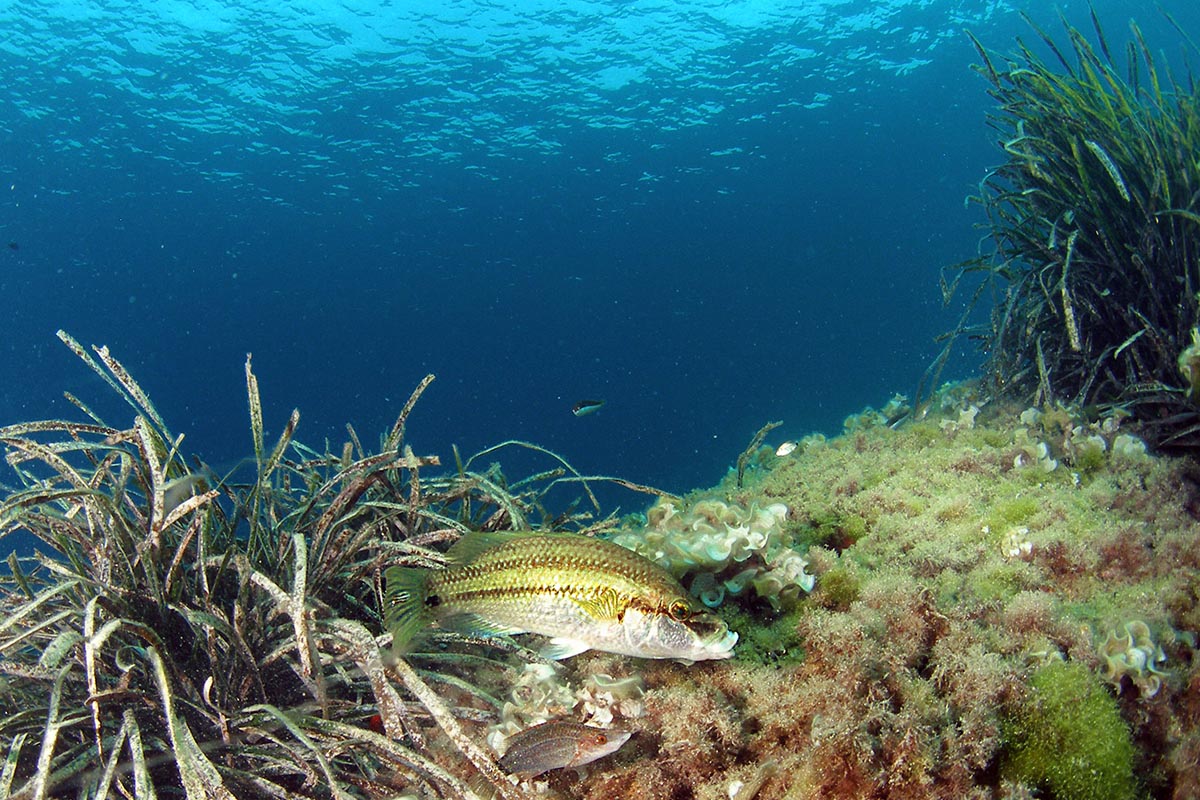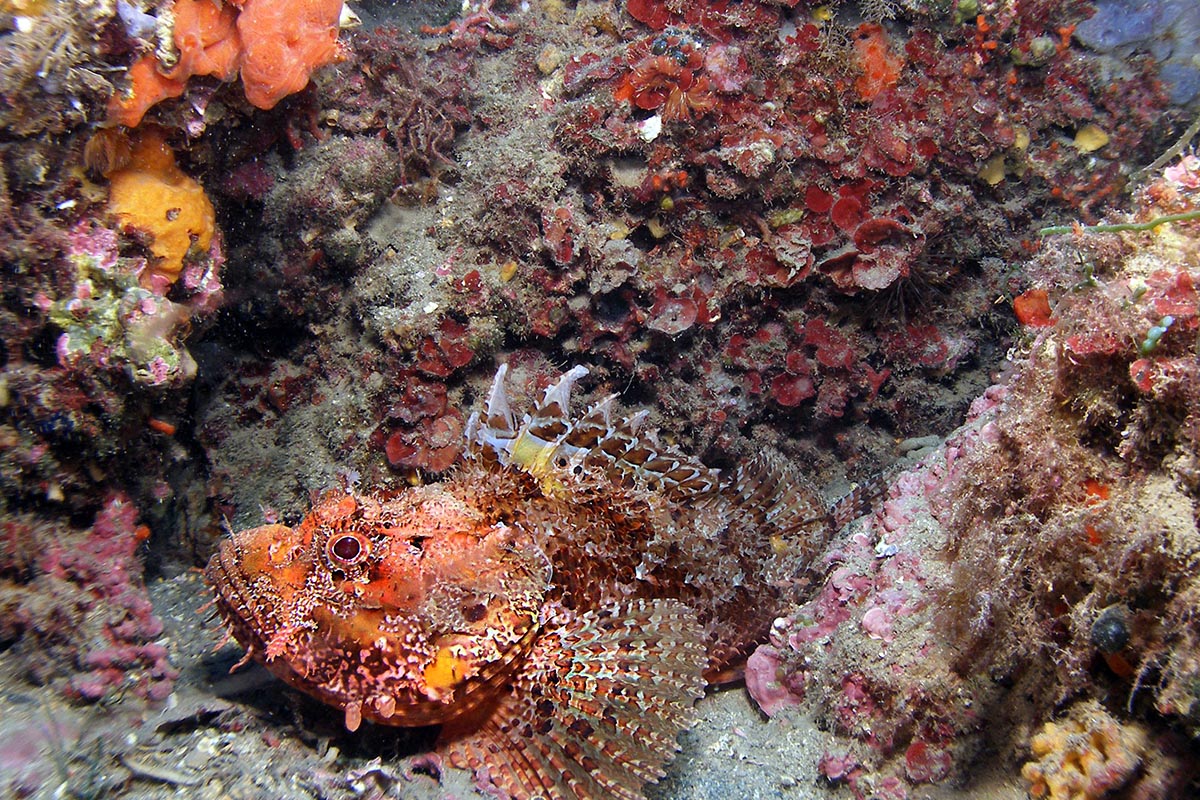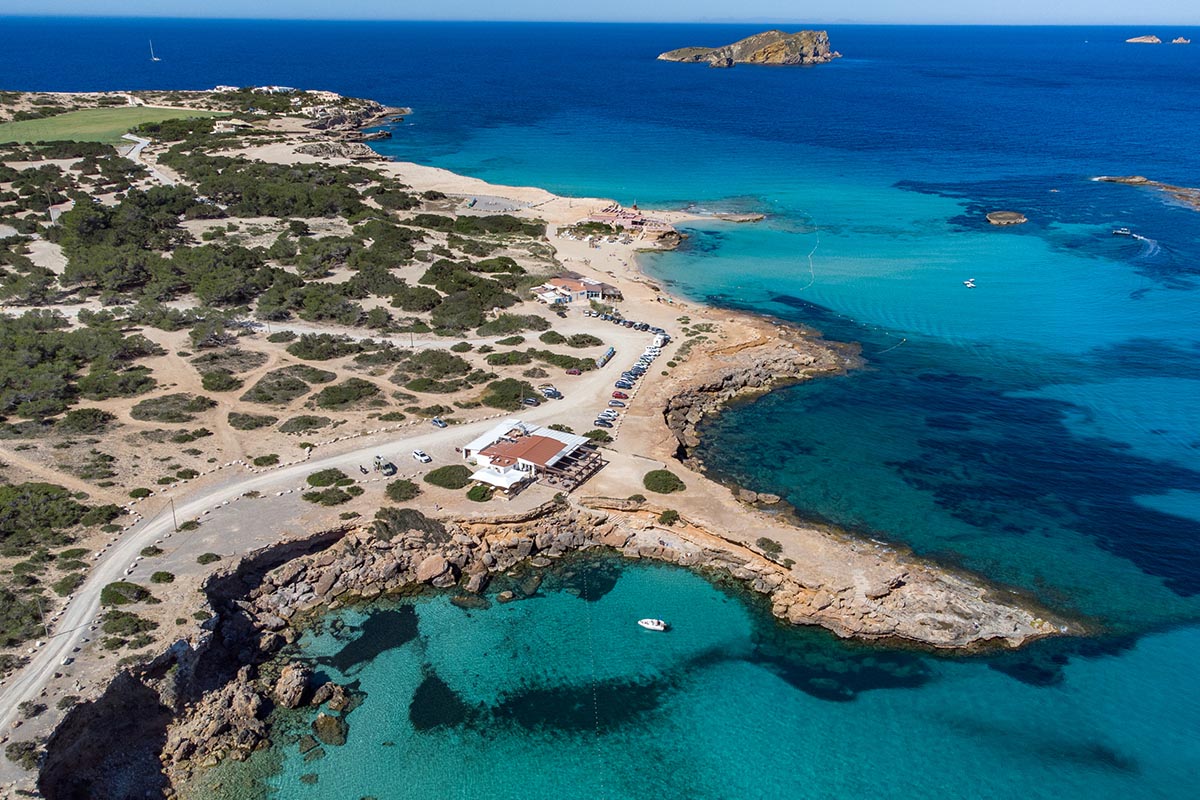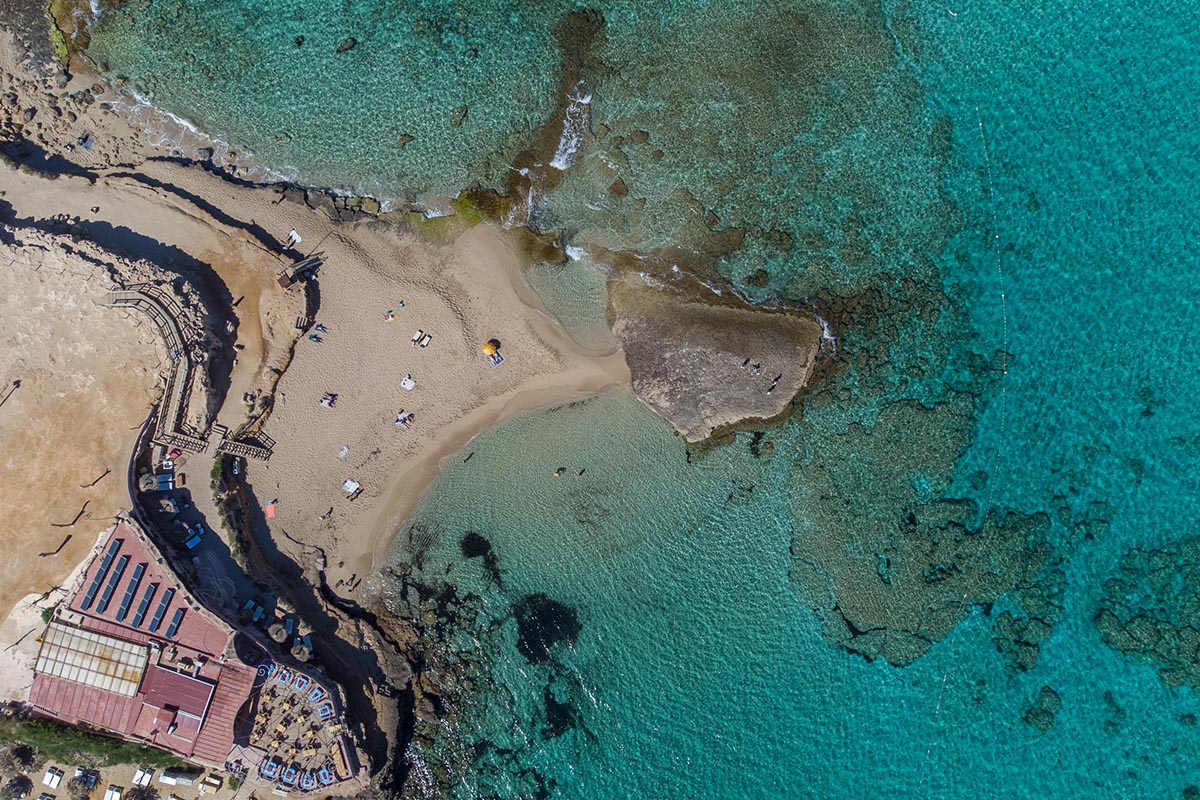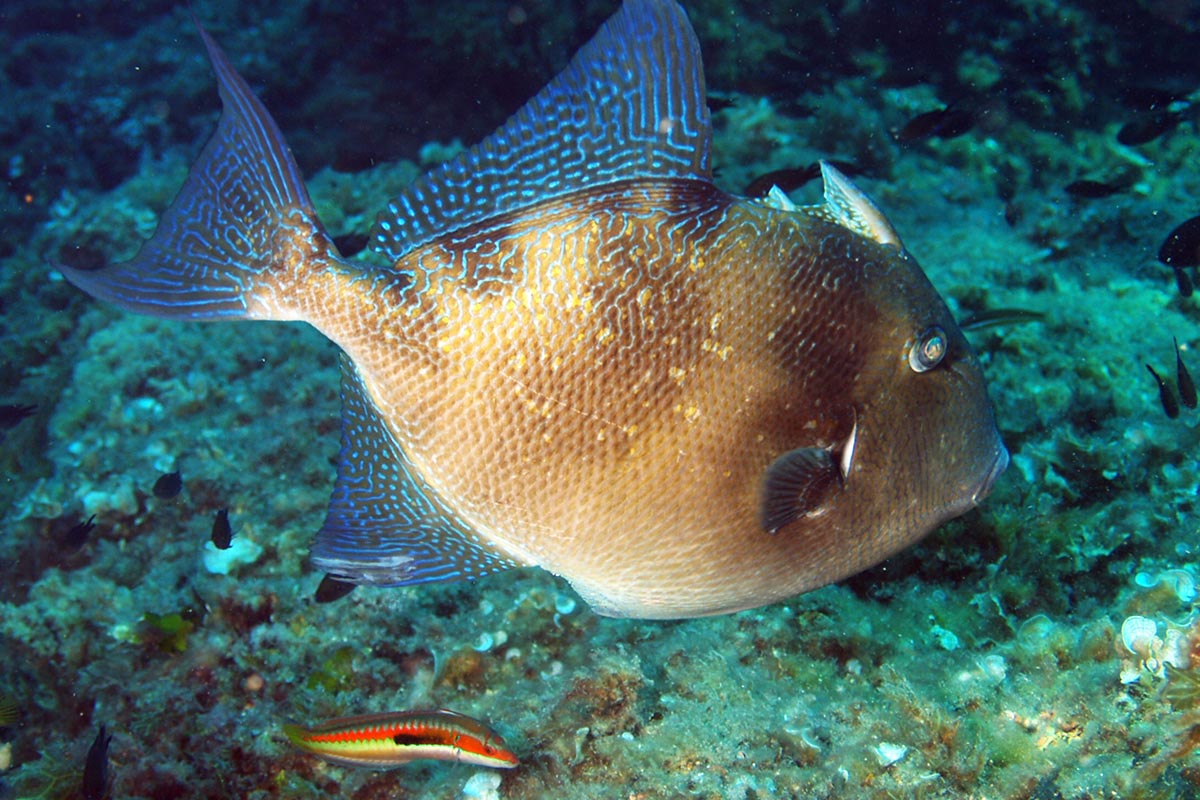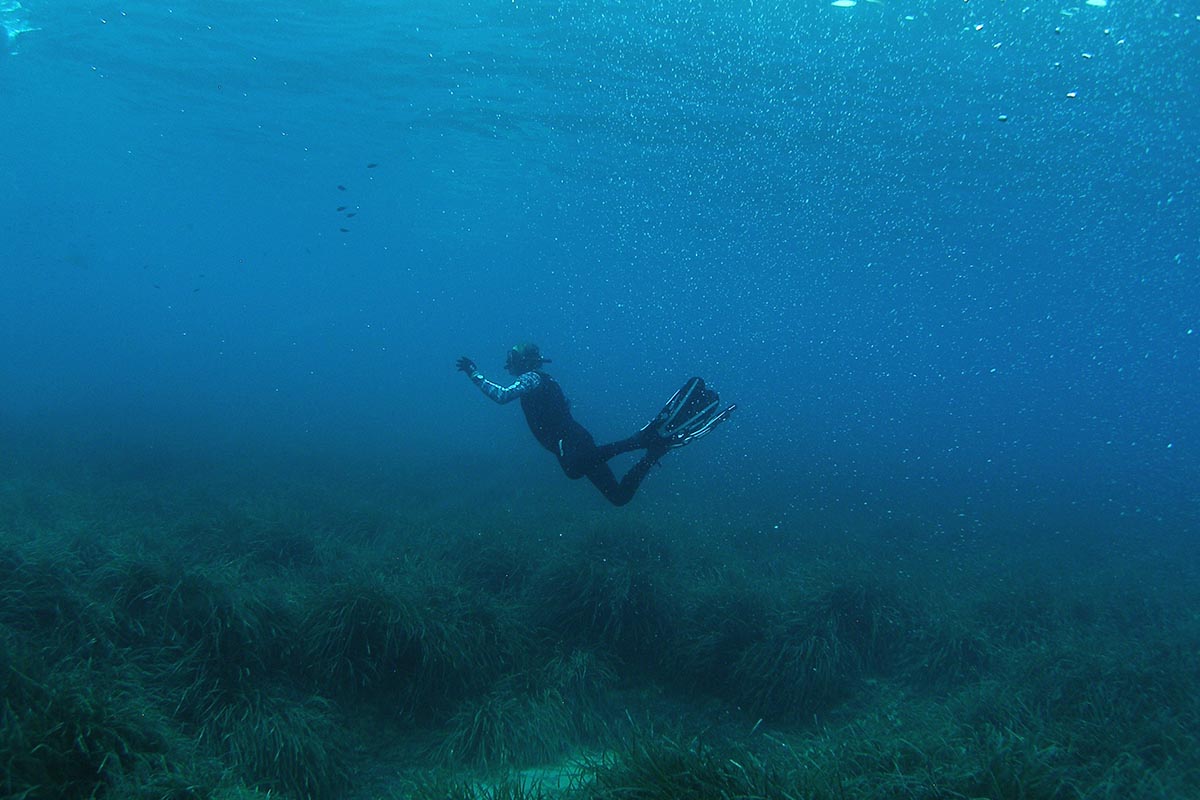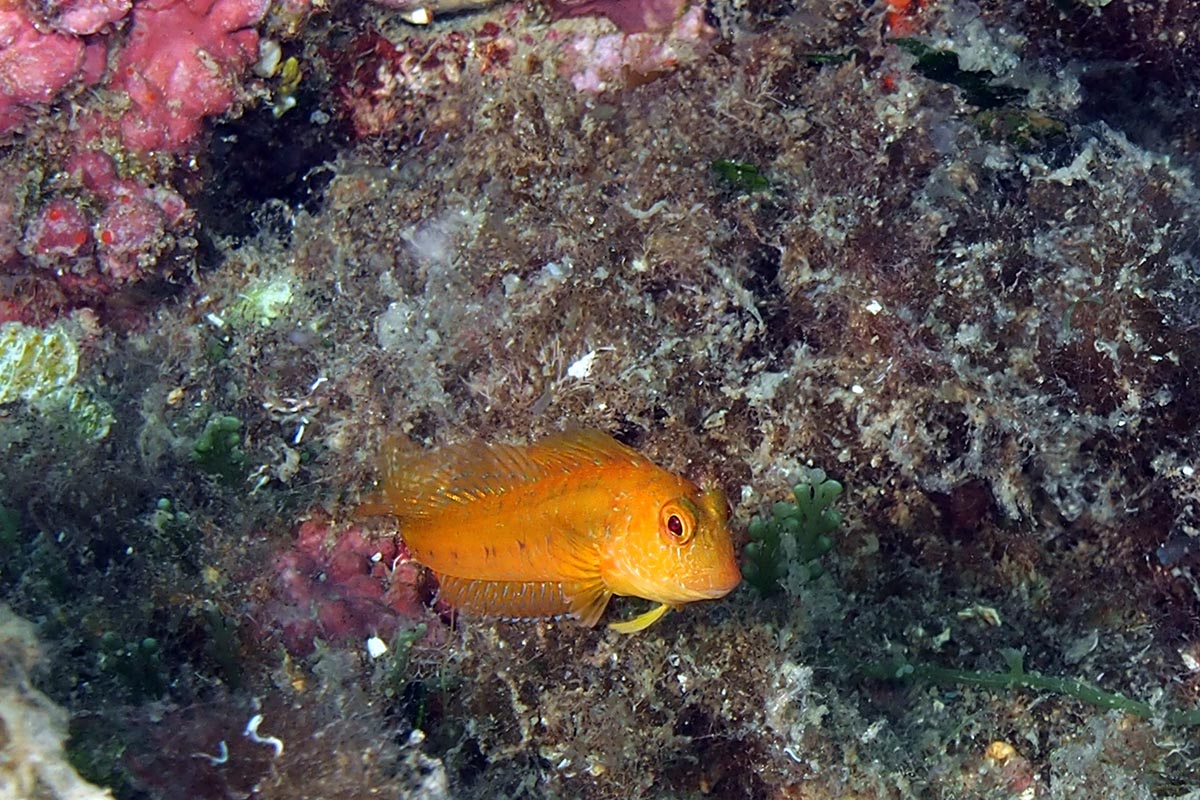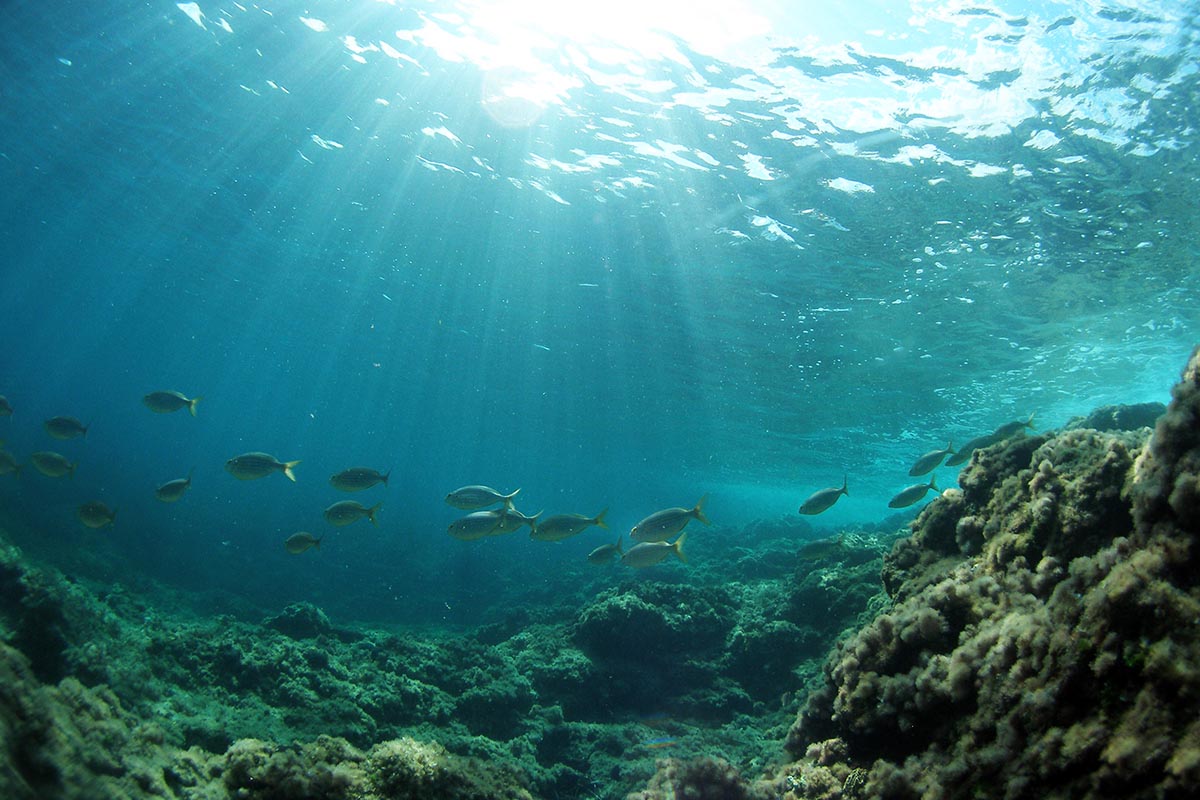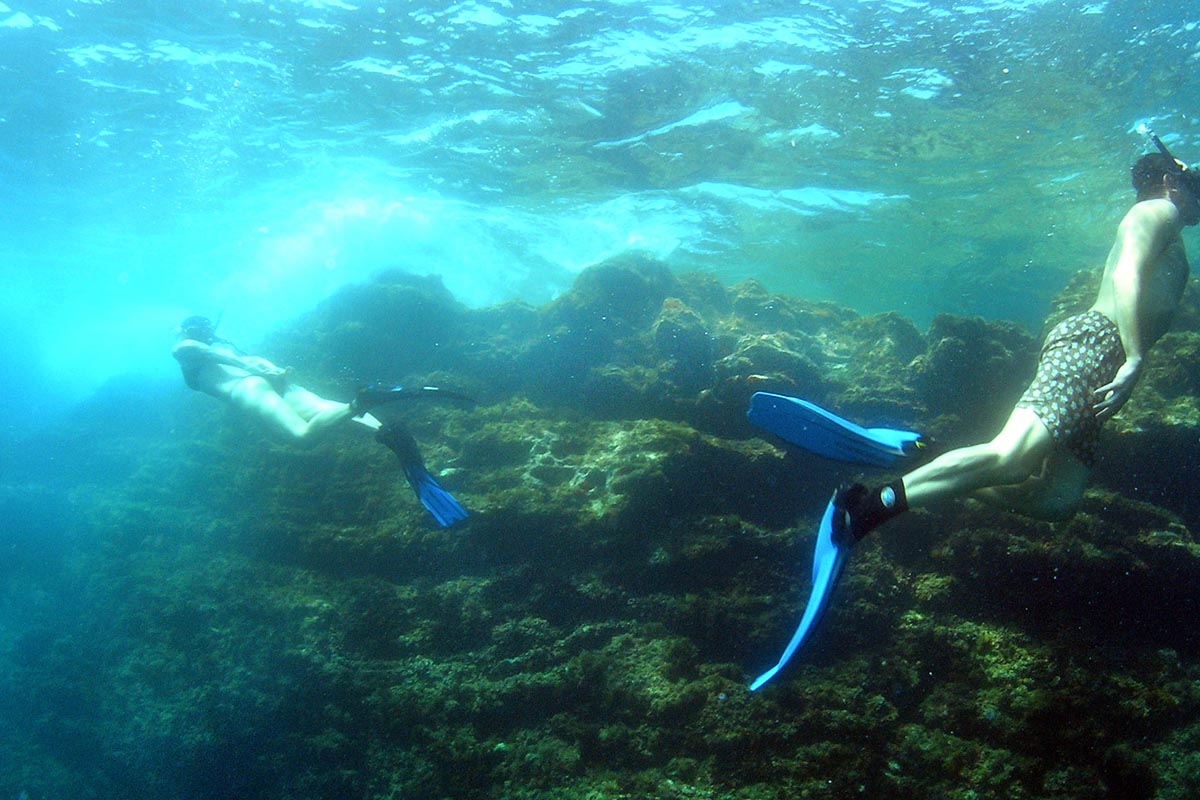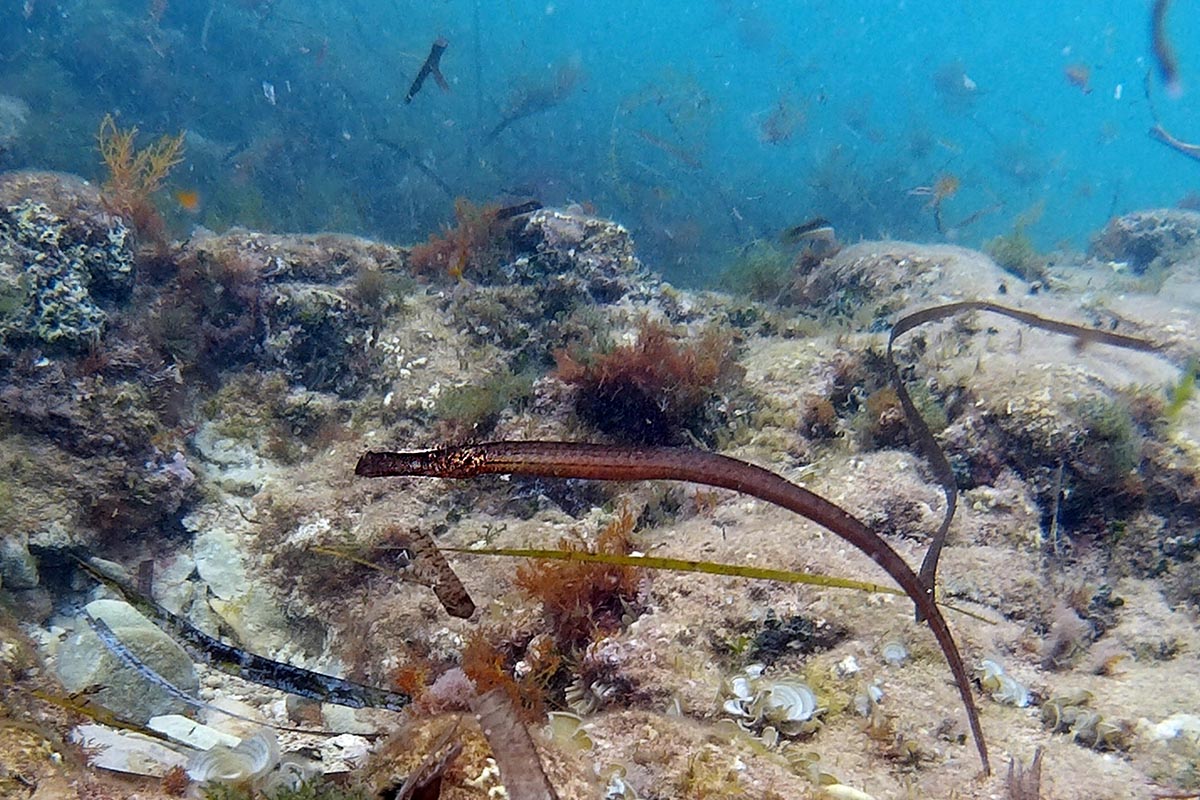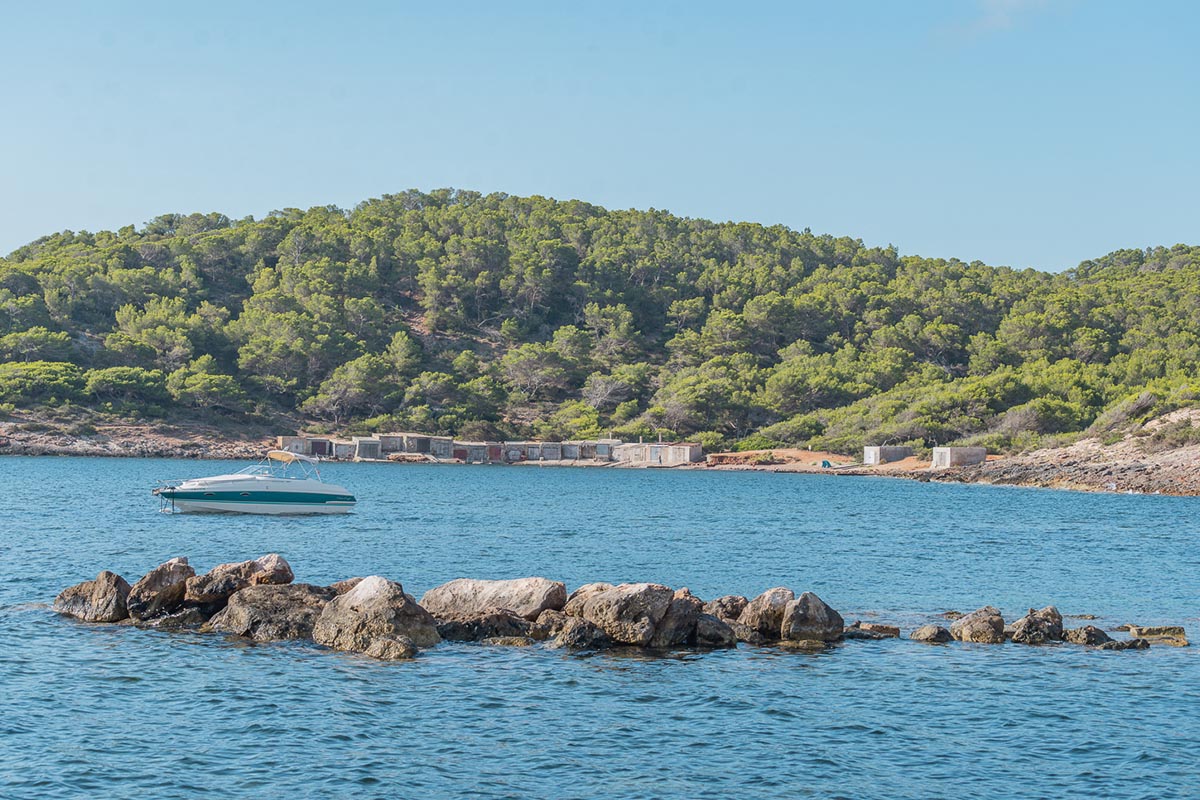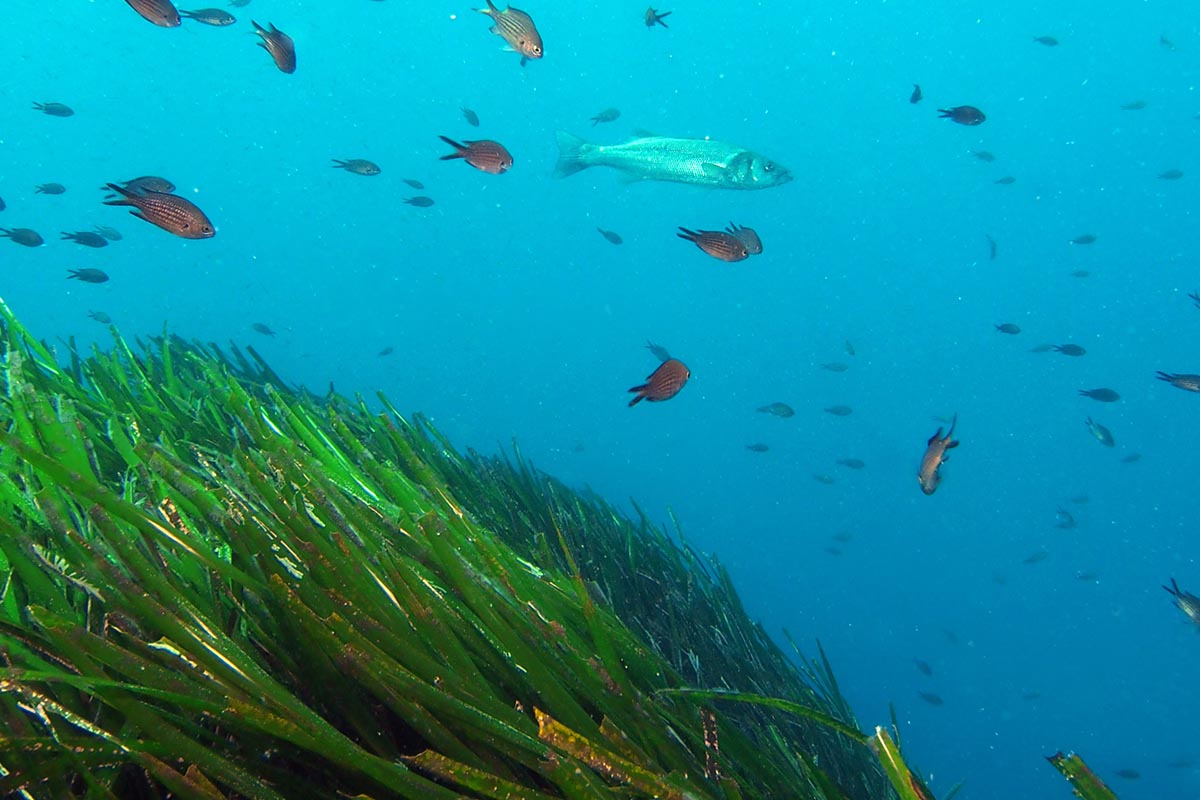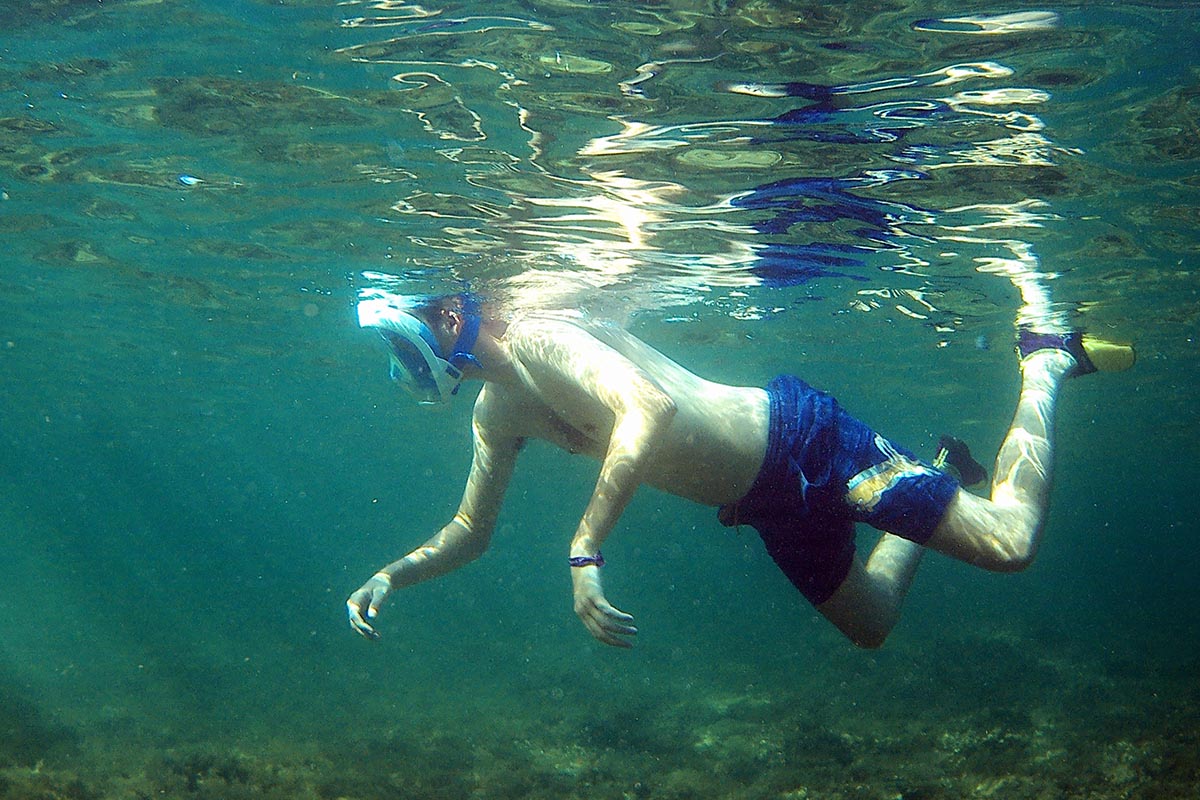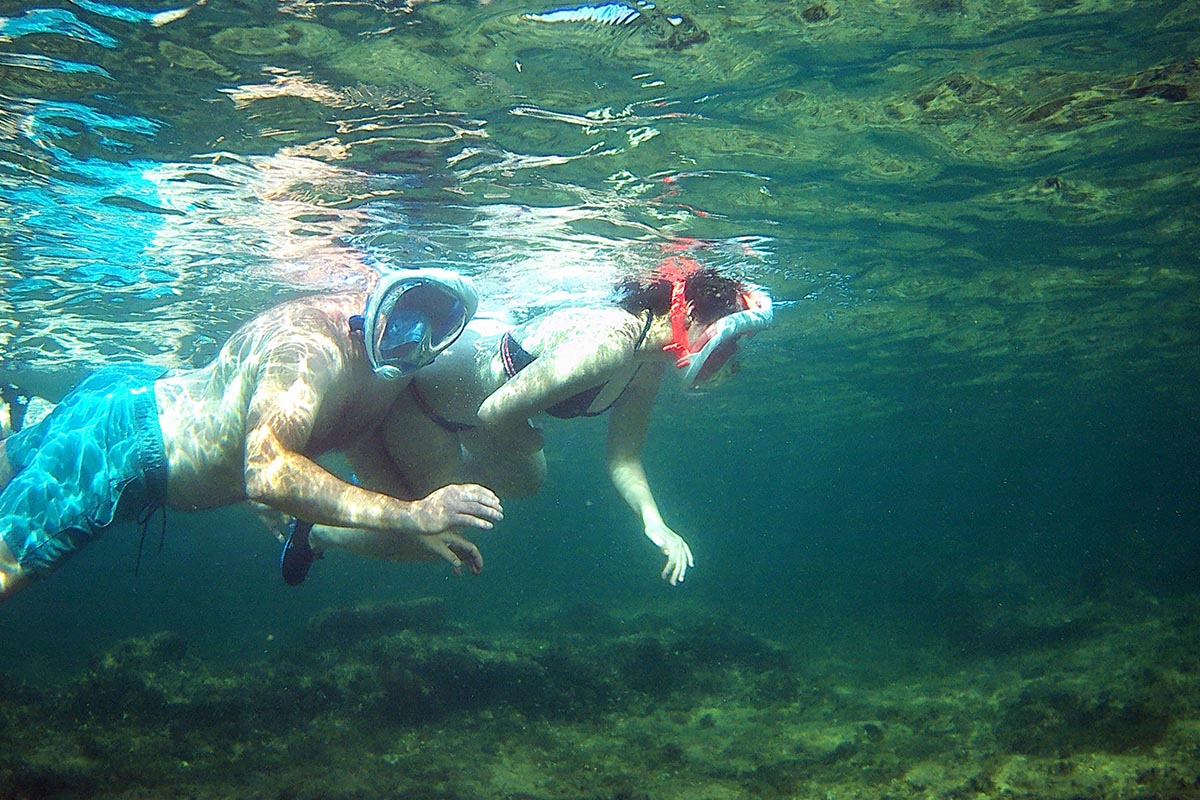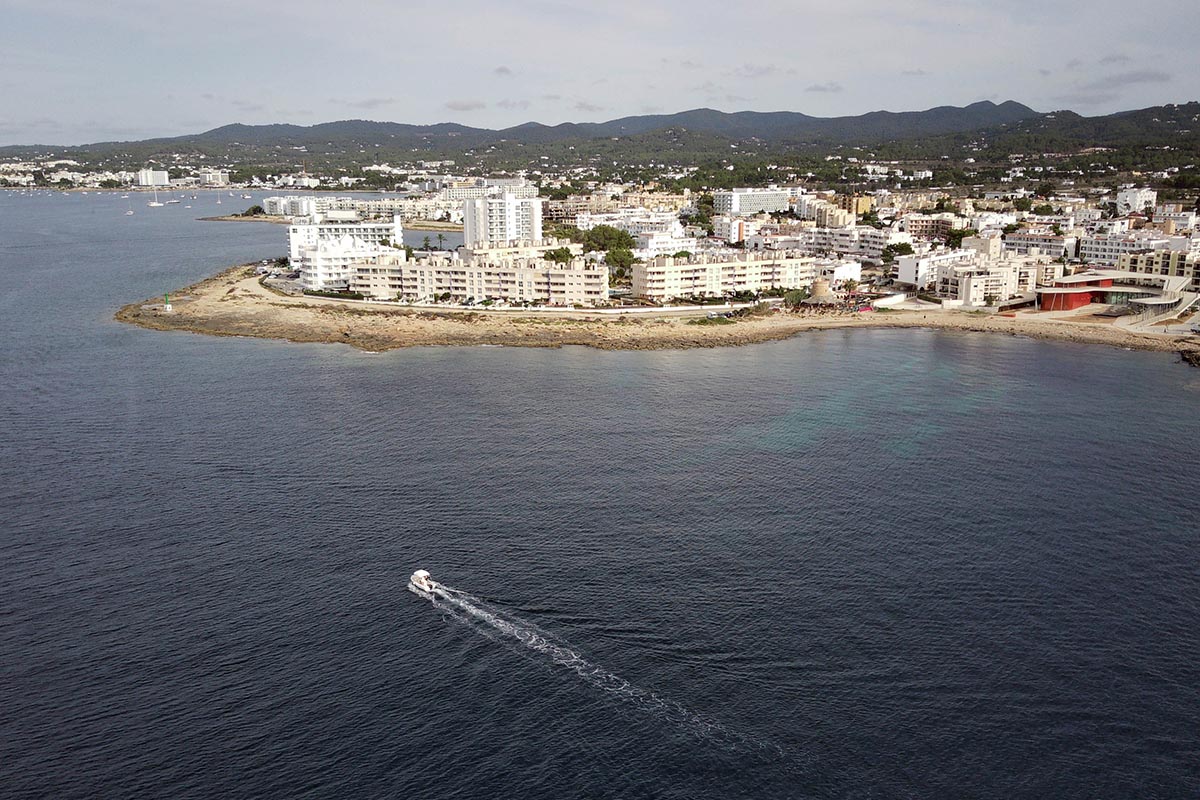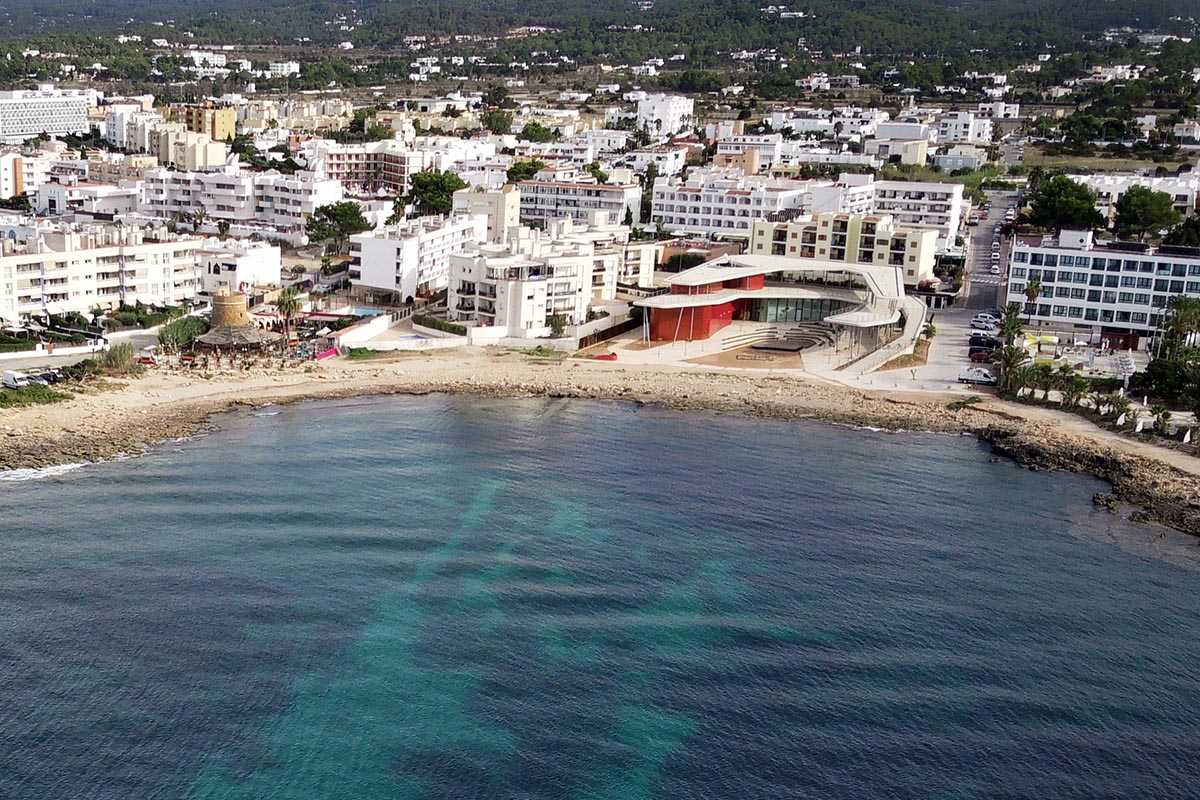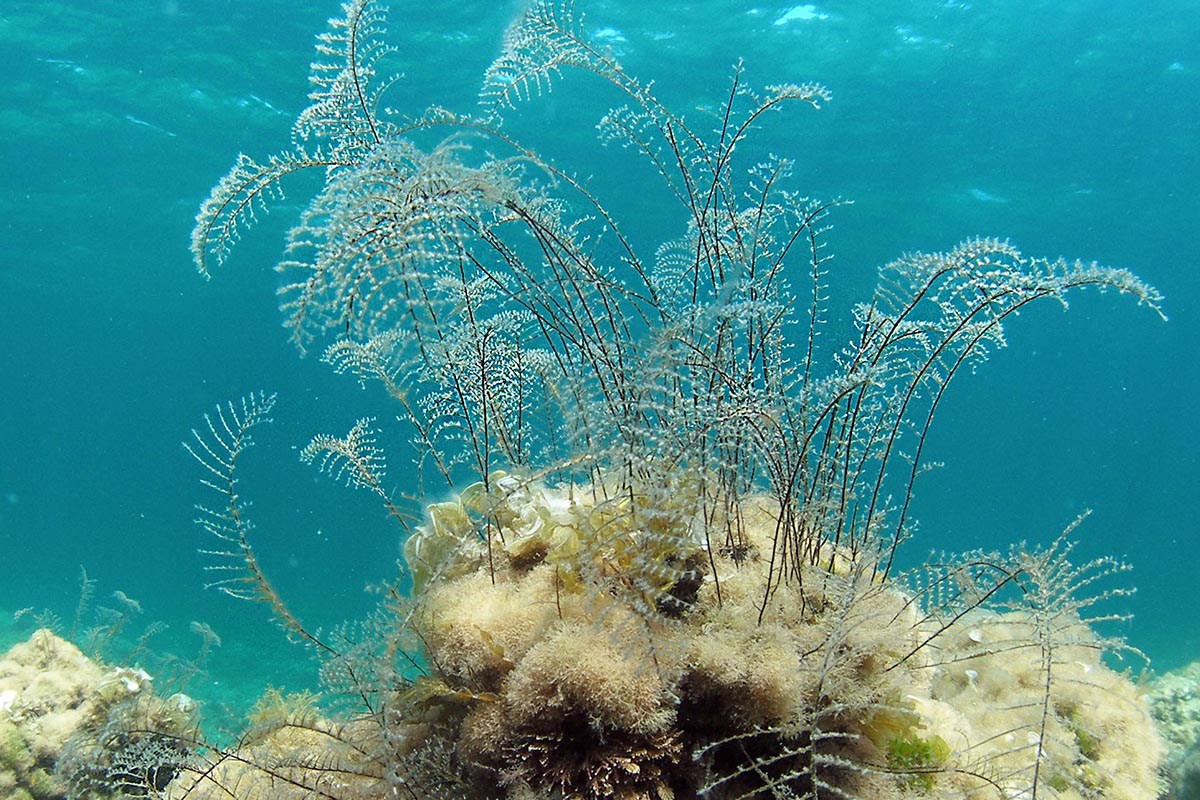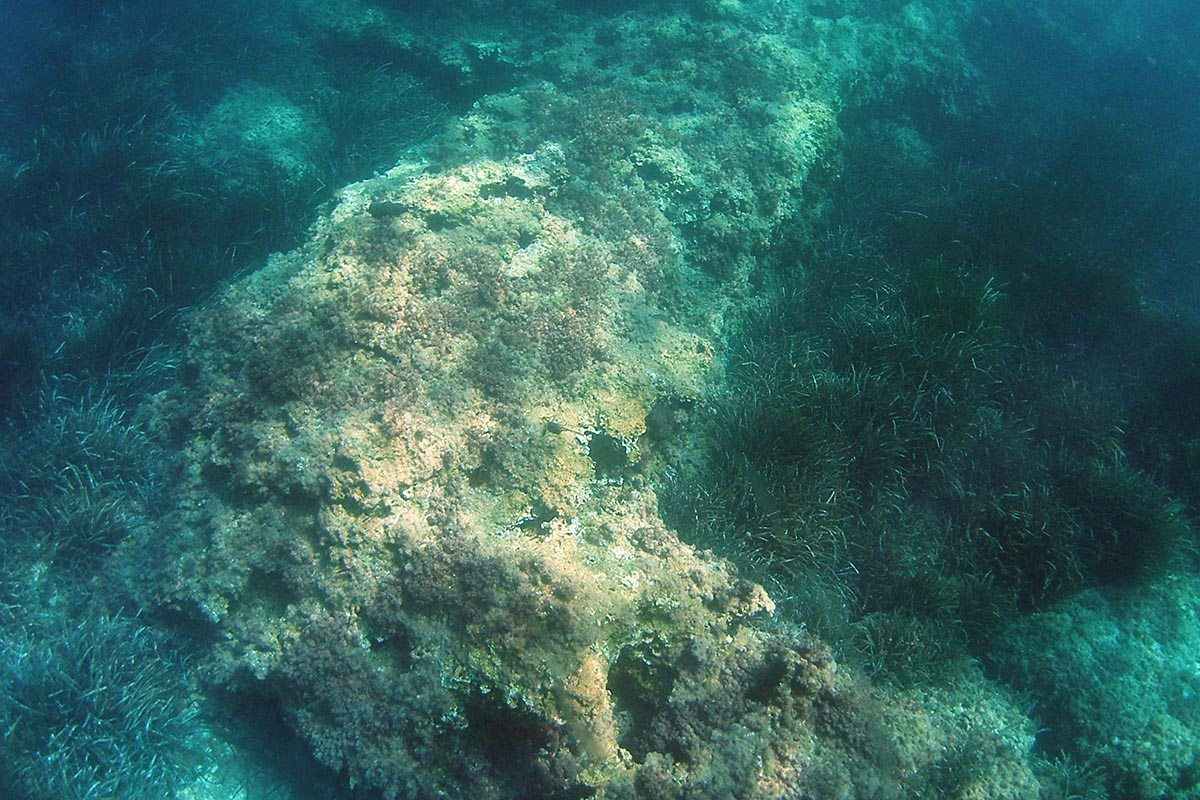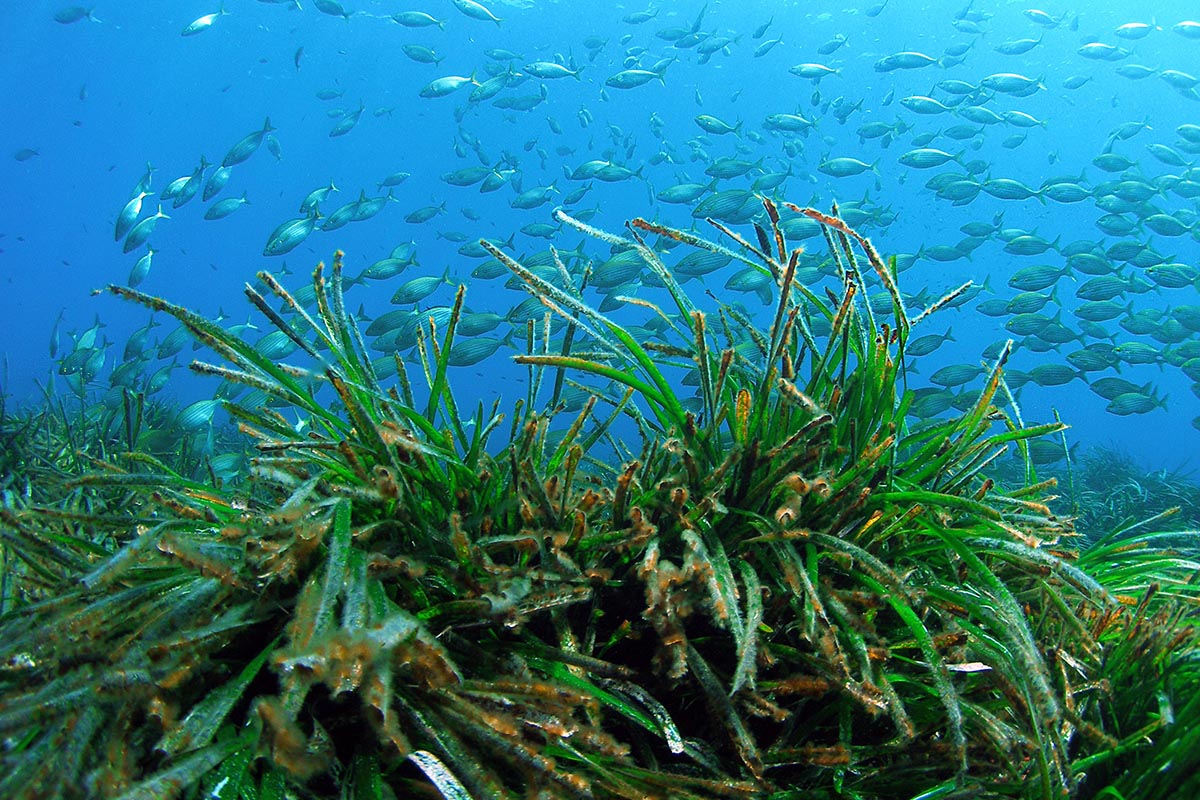Diving route in Escull de S’Espatar – Ibiza
Diving
ANCHORAGE COORDINATES: 38° 57’ 24,00’’ N | 1° 11’ 57,00’’ E
MAXIMUM DEPTH: 35 M.
TIME: 45 Min.
ROUTE: 400 M.
DIFFICULTY: Medium
We are next to the island of s’Espartar, which belongs to a nature reserve, meaning that we cannot moor the boat at the island nor actually go ashore.
The dive starts from the southern platform of the island, just beyond the Escull de s’Espartar, in a small bay between the eastern tip and the southern cli of the island.

We will anchor the boat in a place where the bottom is no more than 5 metres down, as this is the depth at the shallowest part of this area.
We will go in a southerly direction across a large meadow of Posidonia oceanica (sea grass) until we reach a drop that descends from 5 to 30 metres. At this point we turn from the southerly direction that we have rst taken and take a south-westerly direction, following the rock face and always keeping it on our right hand side.
The bottom is predominantly rocky with large breakwater areas where it is not unusual to nd large grouper, brown meagre and white bream. It is easy for these sh to hide, so it would be a good idea to plan the dive with a powerful arti cial light in order to scan the numerous hollows that we come across.

As a precautionary measure, we must set a maximum depth depending on our diving level and try not to exceed this, as the sea bottom descends constantly to almost 50 metres.
As soon as our guiding wall changes direction and the south-westerly di- rection becomes west-north-west the marine fauna starts to be less in- teresting, as there is less of it and it becomes less spectacular. This is the- refore a good time (if the air supply hasn’t already forced us to return) to start thinking about going back to where we started from.

Once we have found the platform where we left the boat anchored, we can make a safety stop nearby, taking advantage of the excellent depth of the area for this.
In this last area we can see beautiful examples of pen shells (Pinna nobilis) in the large Posidonia sea grass mea- dow. It is possible to see moray eels and the small young of other species among the endless hiding places o ered by the rocks that alternate with the meadow of marine phane- rogam.


